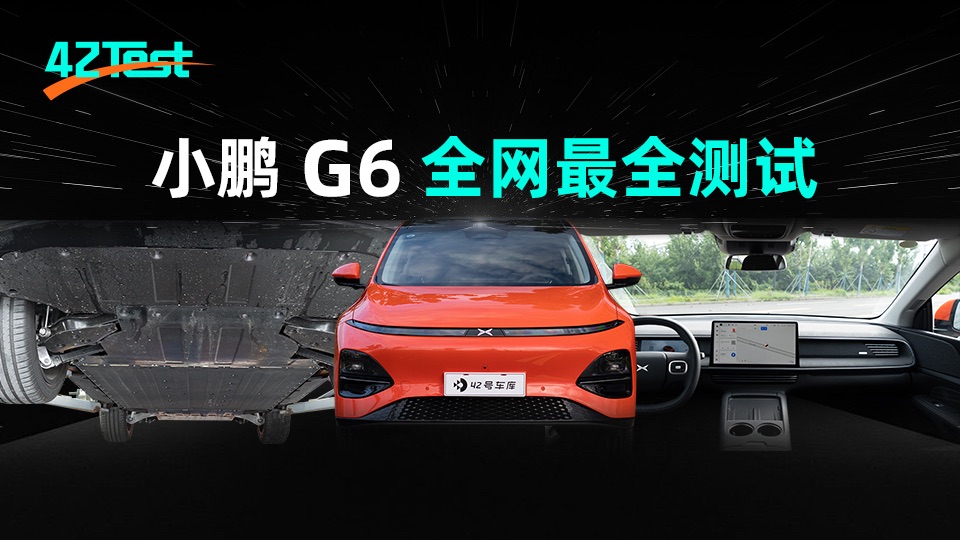The pricing of the XPeng G6 has finally been announced – starting at 209,900 yuan, with 5 variations.
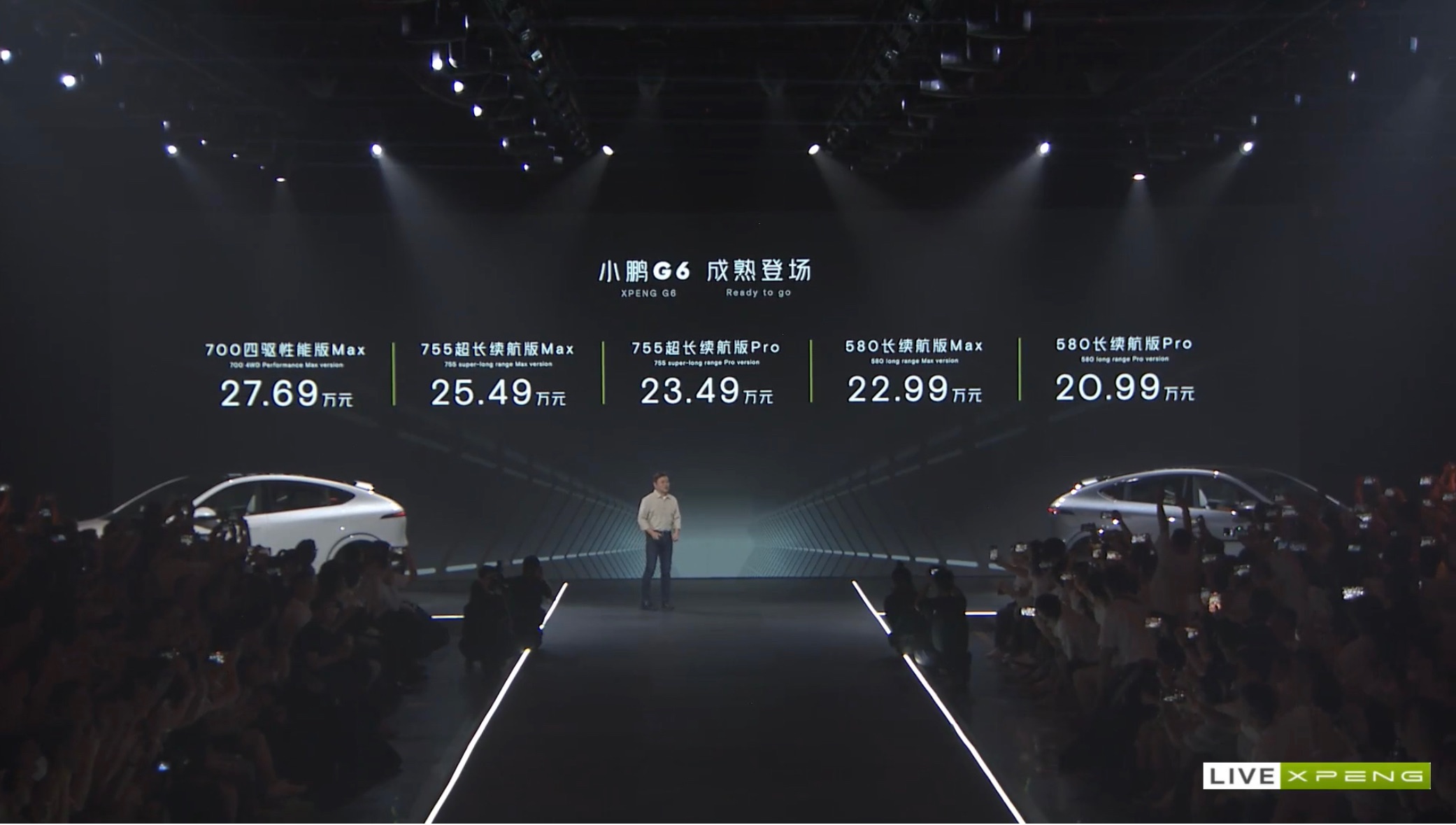
If you’ve been watching the G6 for a long time, but haven’t placed an order after the launch event, I believe you mostly have three questions:
- Should I choose XPeng G6 or Tesla Model Y?
- What about the power, mileage, driving experience, and spatial performance of the XPeng G6?
- Is the XPeng G6 smart enough?
Therefore, in this 42Test, we have conducted a comprehensive evaluation of the XPeng G6 from five aspects, including mileage, charging, driving experience, assisted driving, and exterior and interior design.
Driving Experience: Balancing comfort and sportiness, Understanding the G6 chassis
First, let’s introduce the model we’re testing today: XPeng G6 xxxx, priced at XX yuan, which is the top of the line. Additionally, this vehicle has been equipped with an electric tail wing and 20-inch wheel hubs.
Before testing, let’s compare the hard power of the vehicle. The comparison vehicle is the hottest pure electric medium-sized SUV priced between 200,000 to 300,000 yuan.

Acceleration & Braking Performance
The performance of the XPeng G6 is excellent, with robust acceleration and slightly weaker braking, which is not very stable.
On the day of the test, it was a wet and hot environment, with a temperature of 29 °C. The acceleration test was conducted in launch mode. Our actual test found that the fastest 0 to 100 acceleration time of the XPeng G6 is 4.1 s.
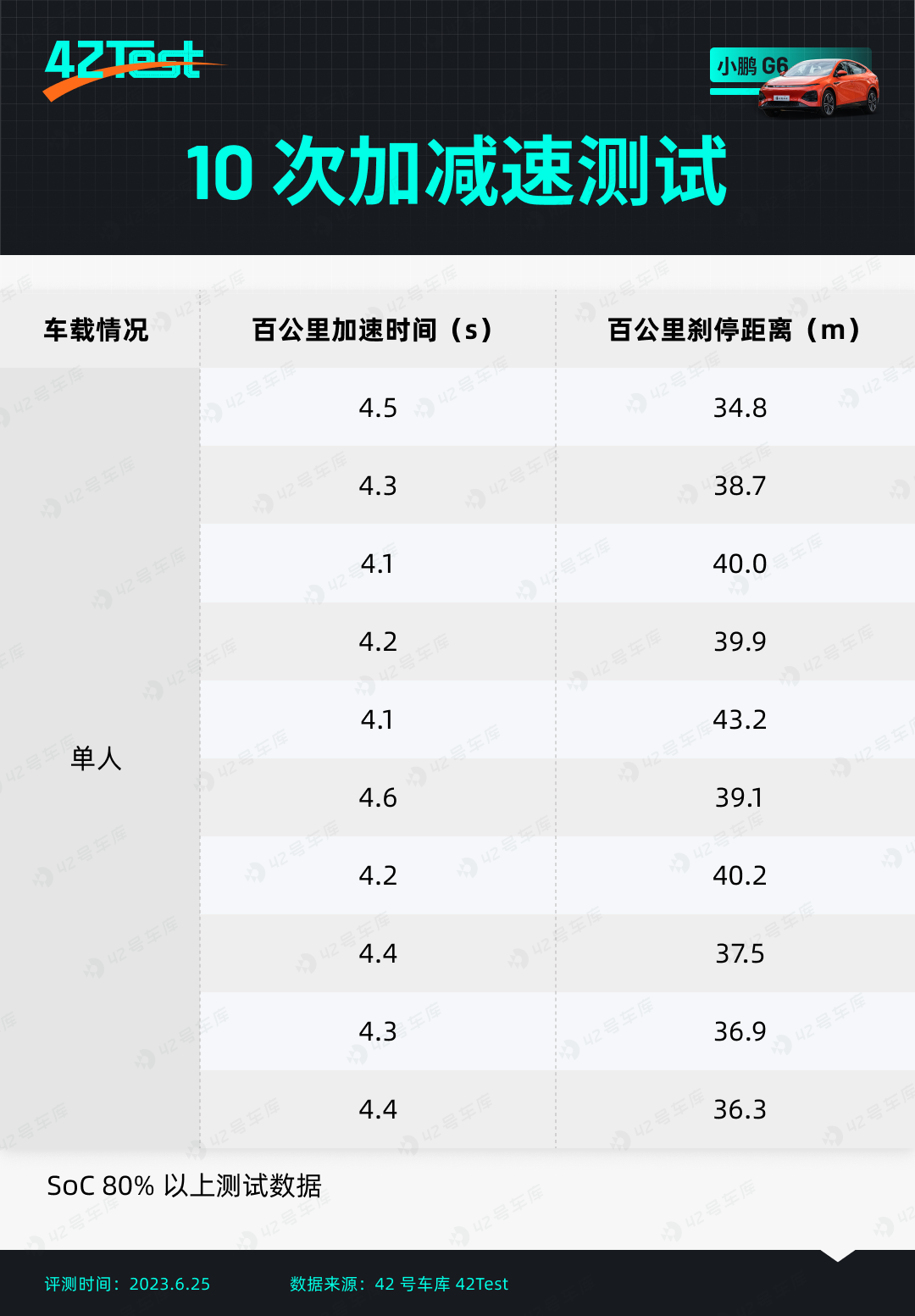
Also, in 10 consecutive acceleration tests in hot weather, the acceleration of the G6 showed almost no decay, which is also noteworthy.
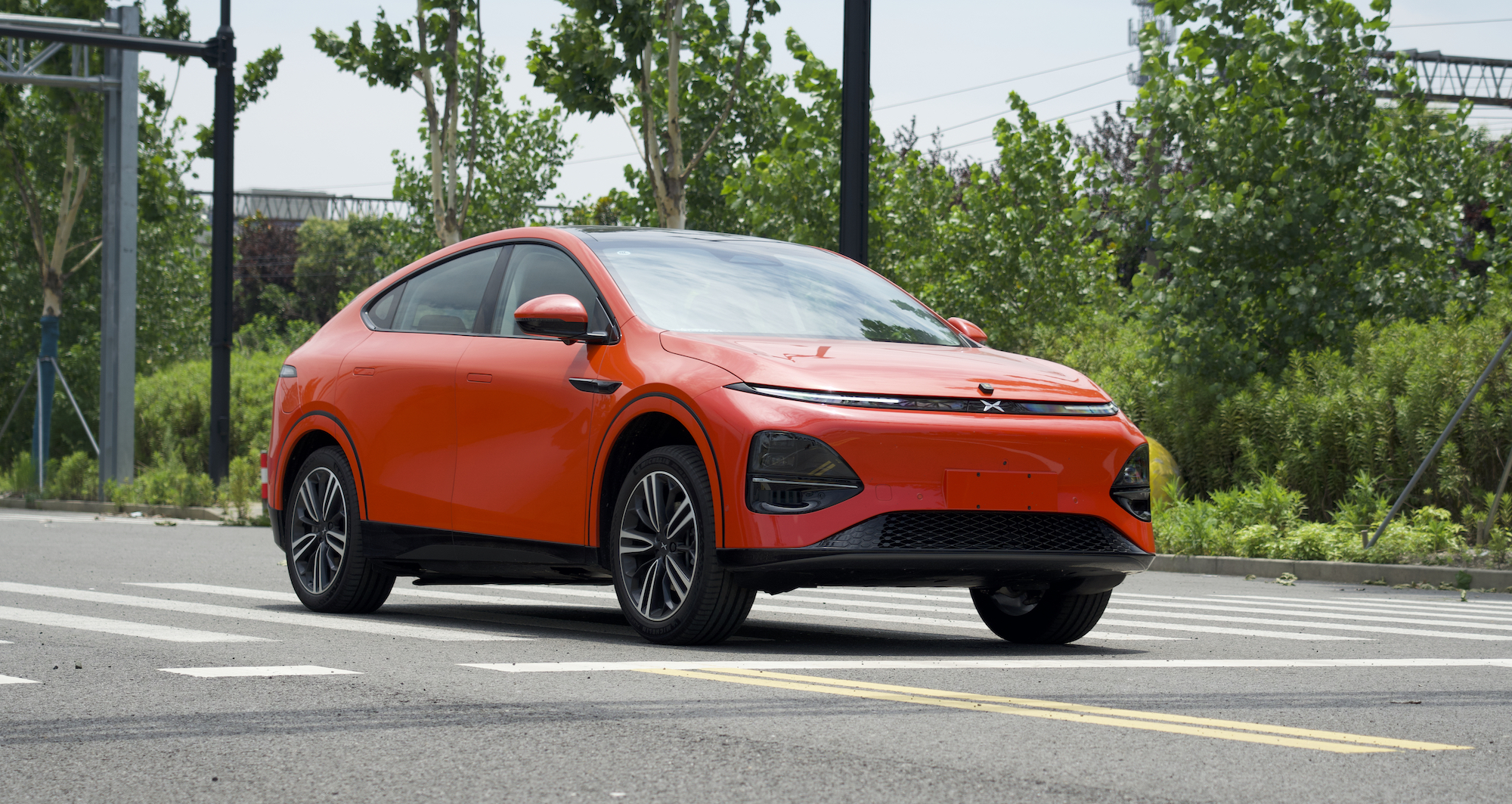
The XPeng G6 is equipped with two motors, front and rear. The front motor has a maximum power of 140 kW, the rear motor’s maximum power is 218 kW, the combined maximum power is 358 kW, and the maximum torque is 660 N·m.
This powertrain’s performance is almost the same as that of the Tesla Model Y Performance Edition, with 1 kW higher maximum power and 1 N·m higher maximum torque. It can be said to be ‘precise’.
The acceleration performance of the XPeng G6 is excellent, but the braking performance is relatively average.
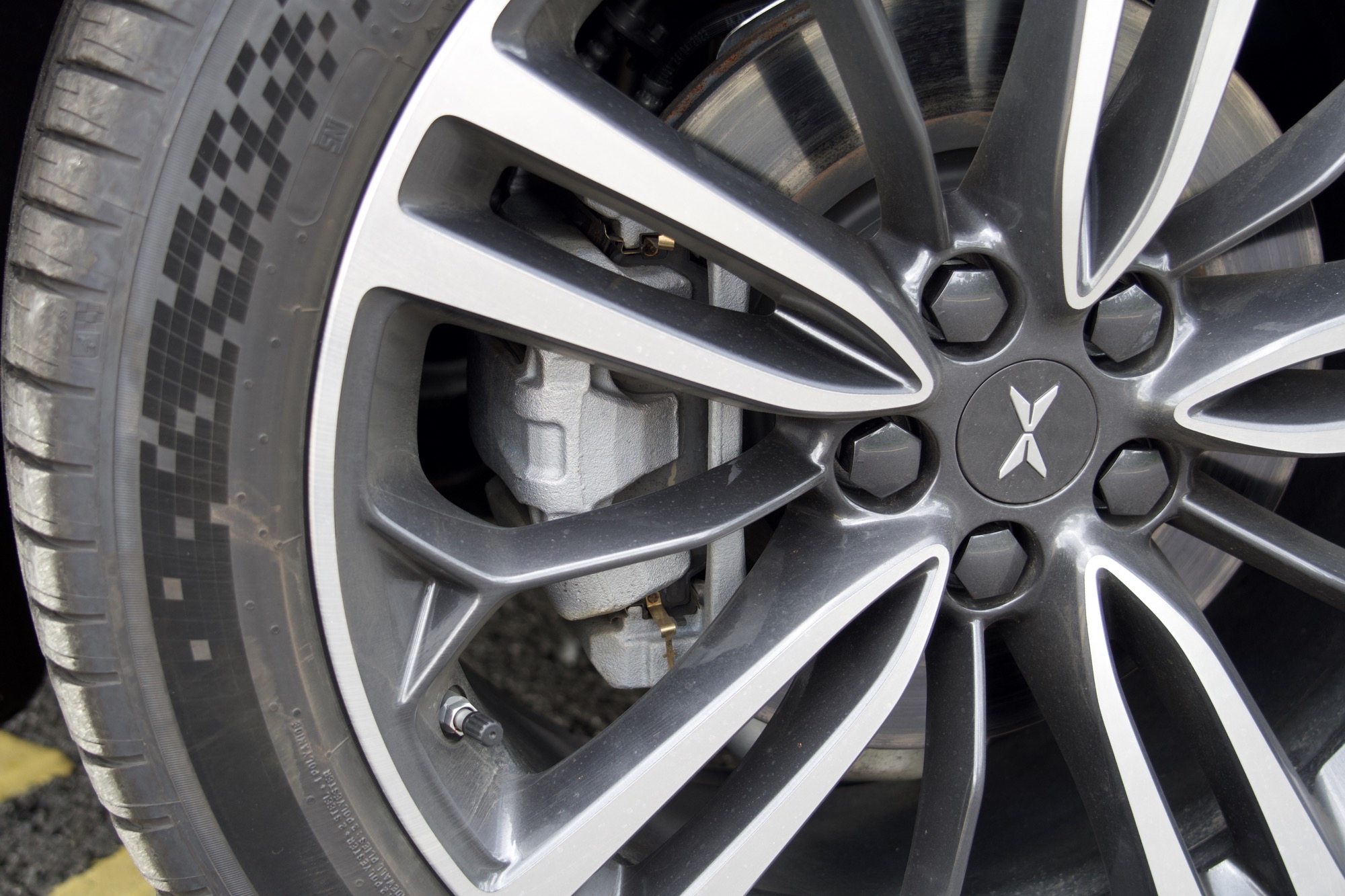 During our testing at the same venue, the shortest braking distance recorded from 100km/h to 0 by XPeng G6 was 34.8 meters. This result appeared impressive at first glance. However, a noticeable heat fade followed, with results clustered around the 39 meters, which was mediocre.
During our testing at the same venue, the shortest braking distance recorded from 100km/h to 0 by XPeng G6 was 34.8 meters. This result appeared impressive at first glance. However, a noticeable heat fade followed, with results clustered around the 39 meters, which was mediocre.
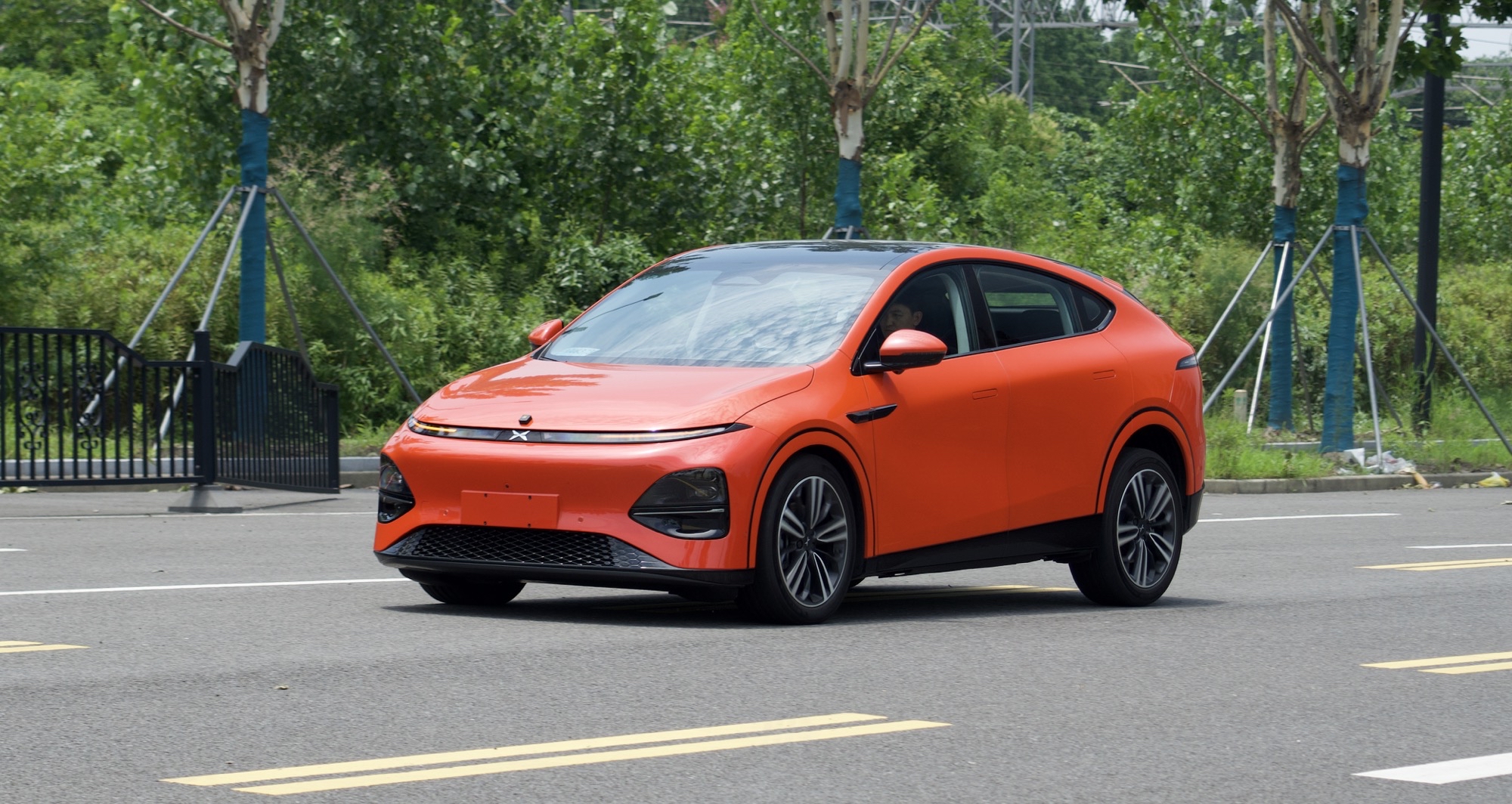
After cooling down the vehicle’s brakes, we conducted a re-test. The braking performance of the XPeng G6 leveled out at approximately 37 meters. Compared to the acceleration capability of just over 4 seconds, this result was not particularly outstanding.
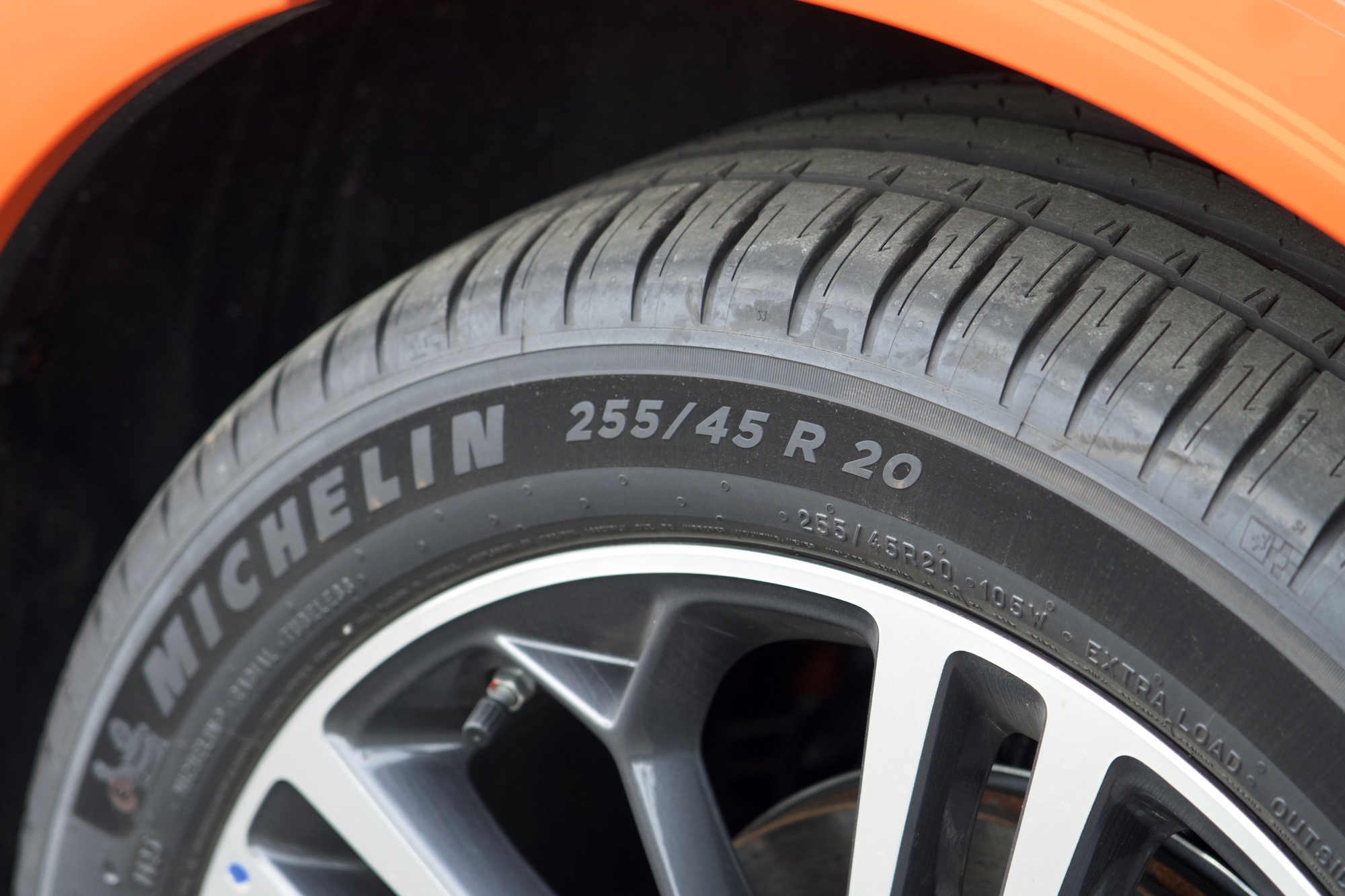
The XPeng G6 in our test was equipped with Michelin Pilot Sport EV tires, the size of which was 255/45 R20 105W. These tires have been specially optimized for electric vehicles, offering low rolling resistance and quietness.
Daily Driving Experience
Using a lift, we provide a clear view of XPeng G6’s chassis.
At first glance, the chassis appears quite flat, which might be attributed to the advantages of an electric platform as well as optimizations made to the vehicle’s aerodynamic drag and NVH.
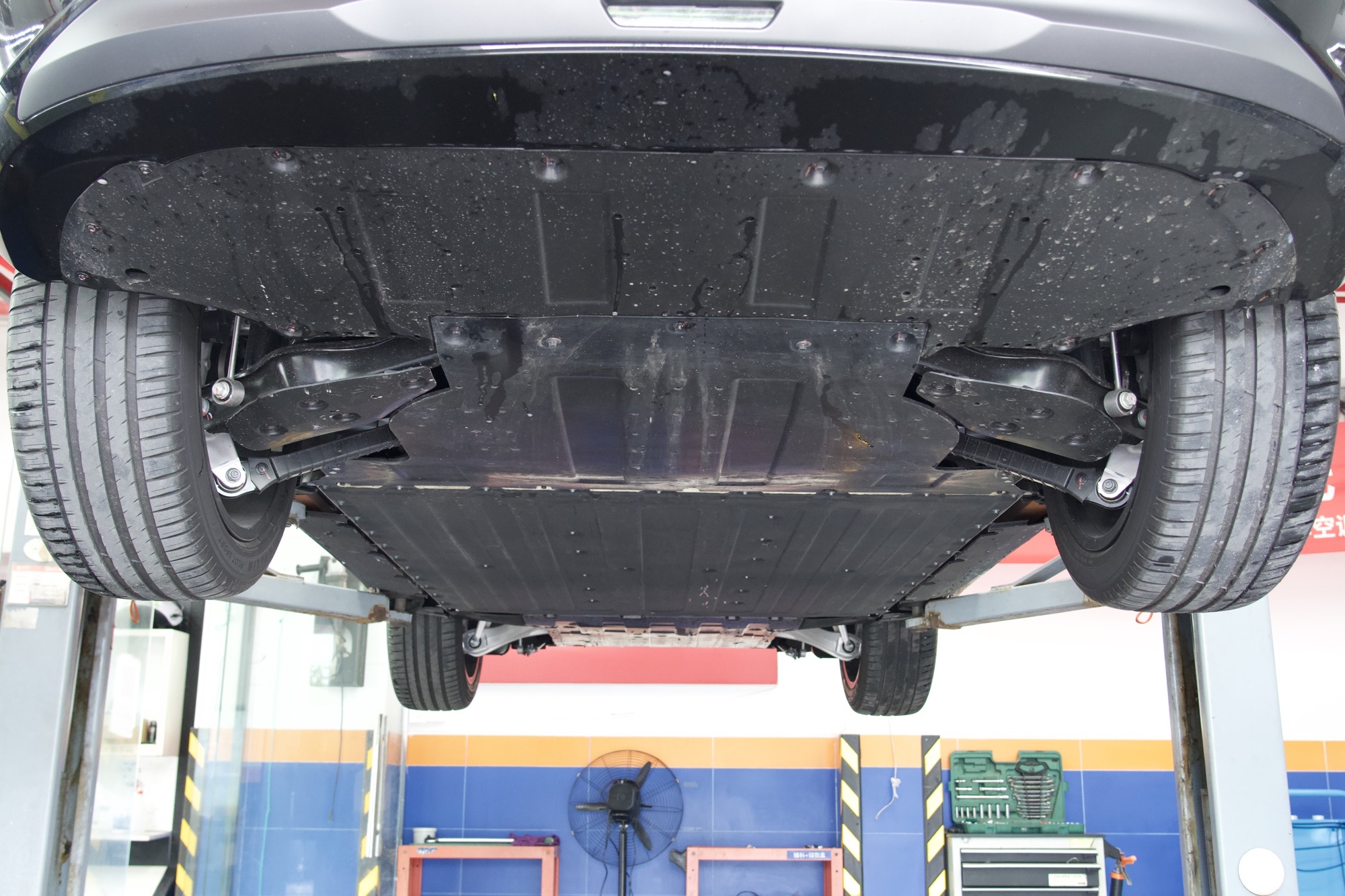
The middle part of the vehicle houses an 87.6 kWh battery pack. Thanks to XPeng G6’s use of CIB battery-vehicle integration technology, the vehicle has highly efficient space utilization in its lower body.

Looking at the suspension setup, the front suspension of XPeng G6 utilizes a double-wishbone configuration, whereas the rear suspension is a five-link type. This type of suspension is usually seen in sporty vehicle models.
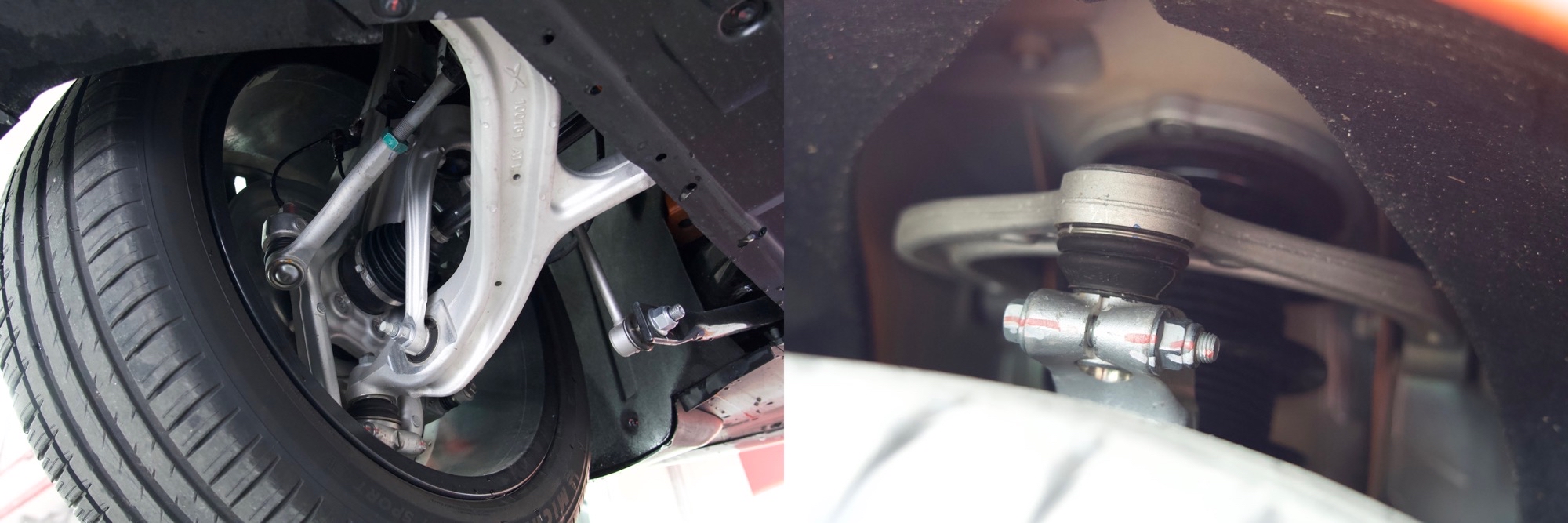
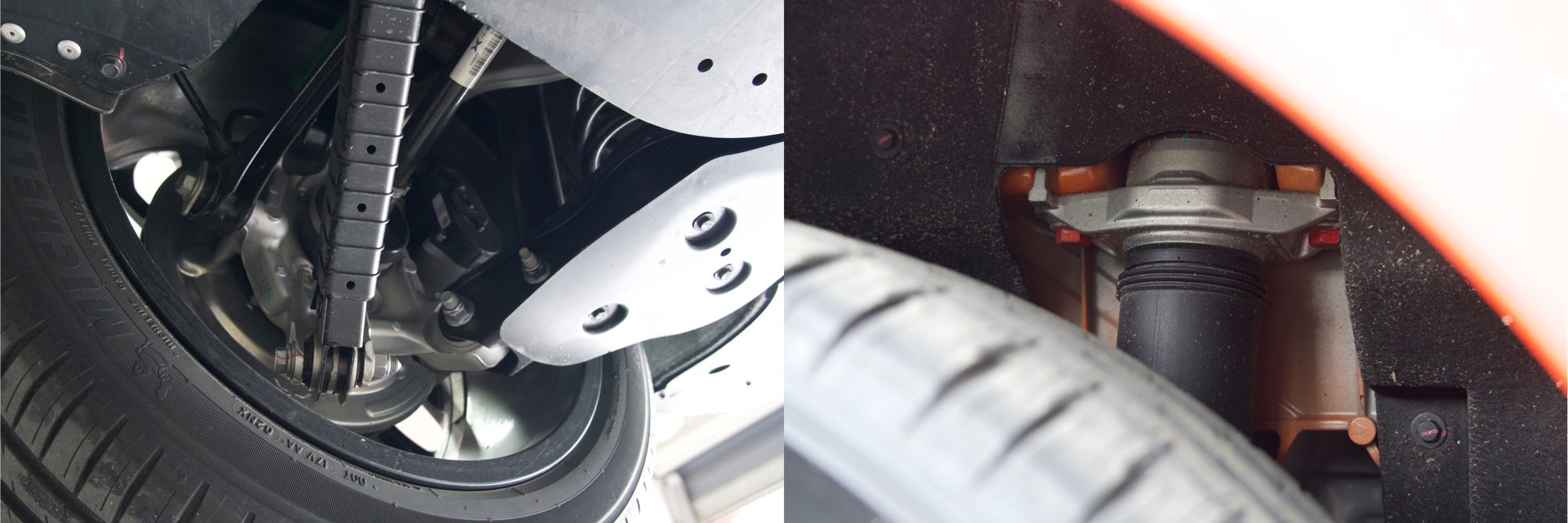
This excellent chassis setup contributes to the exceptional daily driving comfort of the XPeng G6. The normal speed bump transitions are smooth without unnecessary swaying or vibrations. In this aspect, XPeng G6 gives a feeling of refinement.
Moreover, during high-speed travel, the vehicle could easily bounce at the joints of bridges. XPeng G6 performed notably well in this regard. In our experience, both at encountering bridge hop or extensive wavy roads, XPeng G6’s suspension was always capable of well-absorbing the impact, without causing much swaying. The suspension manages to keep the vehicle body steady during upward thrusts and prevents almost any bottoming out when the body falls back, making the overall experience very comfortable.When driving on flat terrains, the chassis of XPeng G6 leans towards comfort. Minor vibrations from the road surface are well absorbed by the suspension, making the driving experience markedly different from the Tesla Model Y. However, on bumpy terrains, the suspension doesn’t adequately absorb the shocks, resulting in noticeable tremors experienced by passengers.
The driving performance is commendable, but the overall back seat riding experience leaves something to be desired. Whether it’s city or highway driving conditions, the jolts are felt more prominently in the back seats. Hence, the front-row driver should be more cautious to enhance rear seat comfort.
Our test drive vehicle, the XPeng G6, was equipped with 20-inch wheel hubs. If you are looking for enhanced comfort, you can try a model equipped with 18-inch wheel hubs.
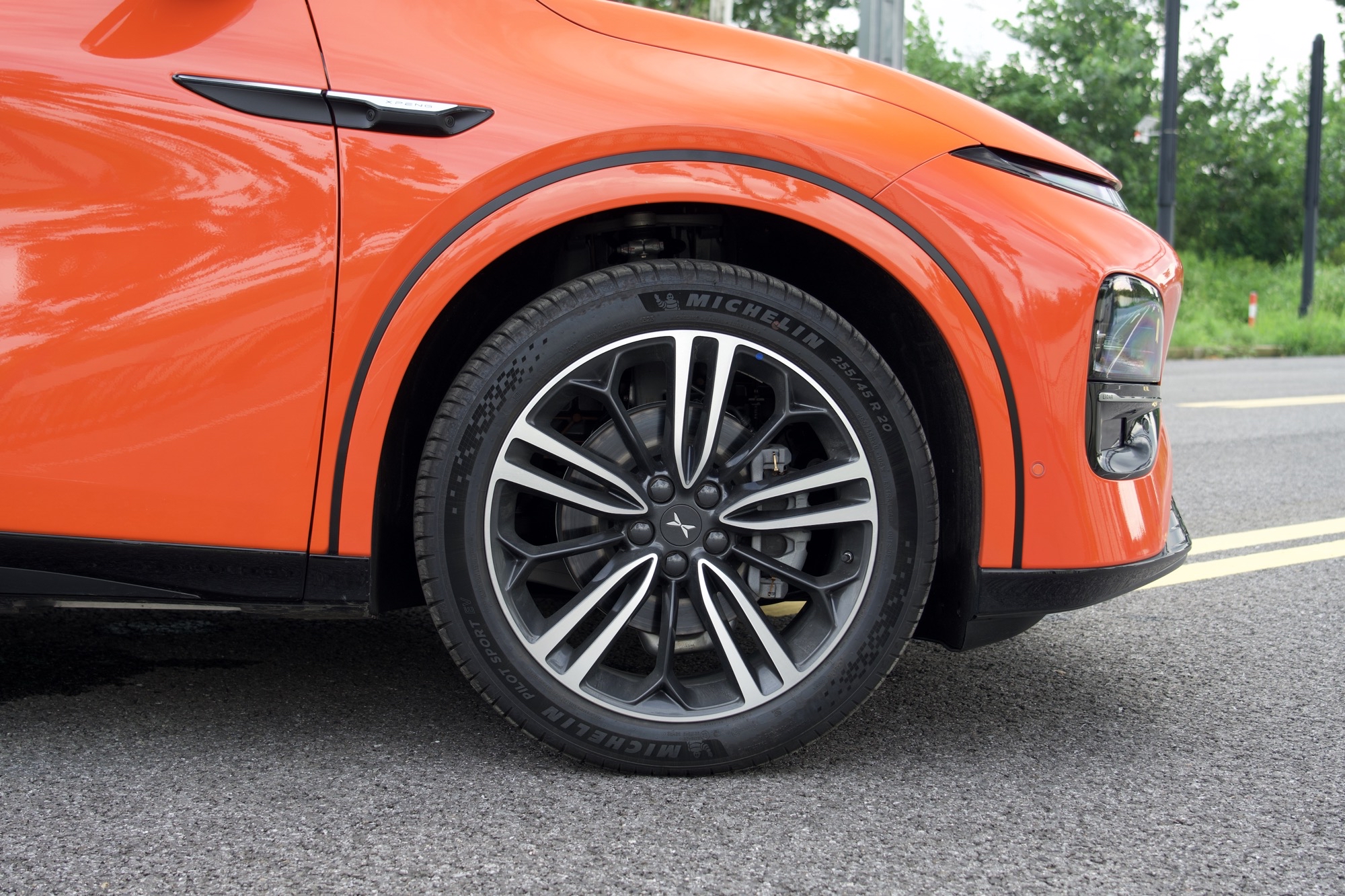
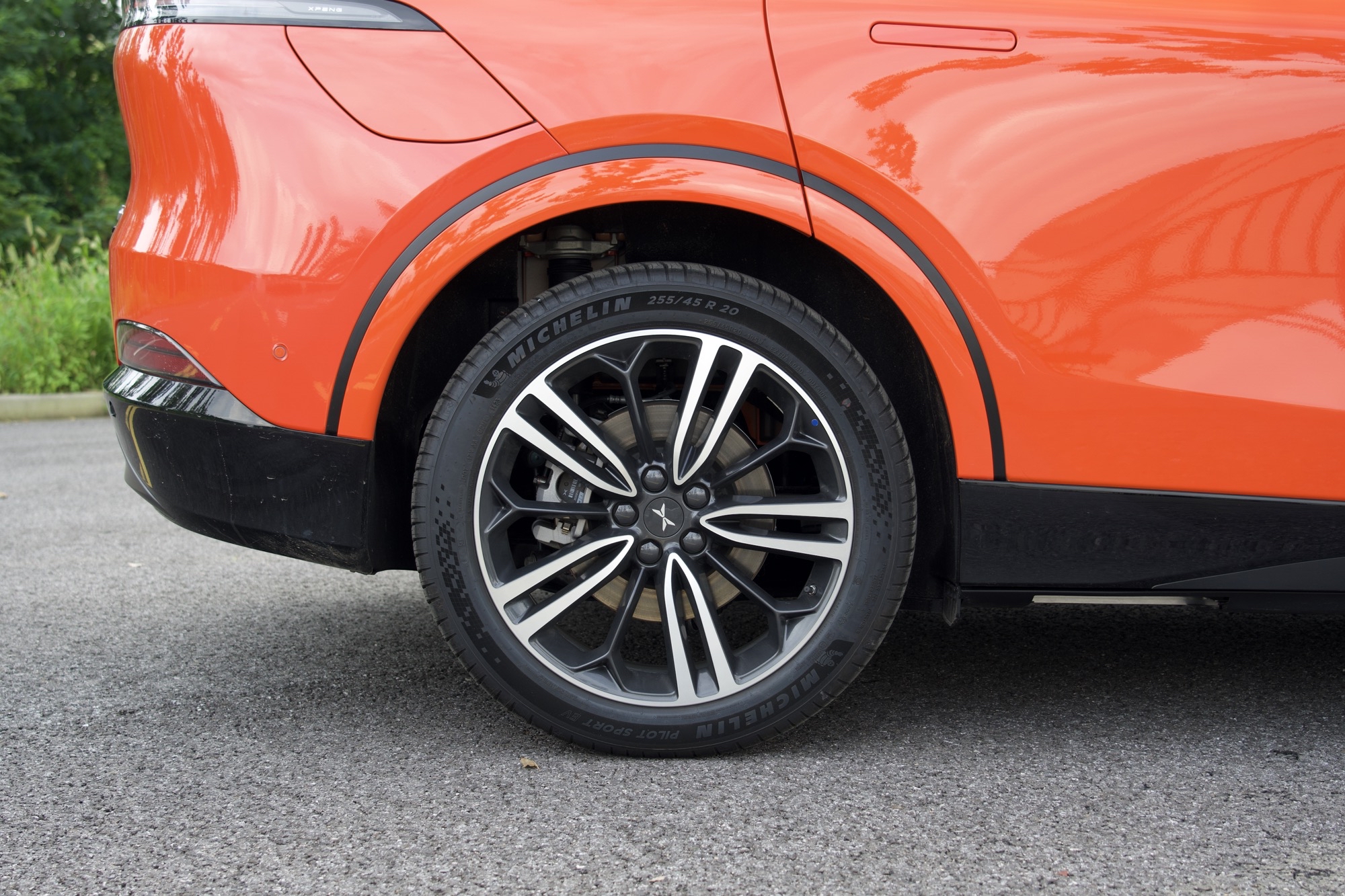
In terms of steering feel, the returning force is linear with speed, light at low speeds and stable at high speeds. Different driving modes can further adjust the weight of the steering wheel. However, there is room for linear improvement in the feedback force with steering angle changes, which is noticeable when making a low-speed U-turn.
NVH Performance
Highlighted features of XPeng G6 include seamless car doors and single-layer automotive window glass which unfortunately are not favorable factors for NVH.
However, in reality, the G6’s soundproof tranquility is almost on par with the flagship XPeng G9. Michelin Pilot Sport EV tires and better body structure contribute positively to its NVH performance.
All windows, air conditioners, sound systems, seat massages, driving-assist features, etc., were turned off, and items inside the vehicle that could interfere with the test were removed. The vehicle was then driven at 0, 60, 80, 100, and 120 km/h in a closed-loop, with the driver’s ear noise being recorded three times for each speed to obtain an average value.

Disregarding the test conditions, in daily driving conditions, you might experience these types of noise: a slight noise from the drivetrain, wind noise at the A-pillar and rearview mirror, and wind noise from the small window behind the C-pillar. Besides, if you open the seat fan, the noise when parked becomes more apparent.
Range Test: Actual range 475.9 km, Display is accurate
Next, we tested the XPeng G6’s range capability under both highway and city driving conditions.
Highway Range: Average speed of 83 km/h, real range of 475.9 km
Once the XPeng G6 was fully charged, the displayed WLTP range was 534 km. While XPeng claims an 87.5 kWh battery capacity, our measurements from the vehicle’s nameplate data indicated that the actual battery capacity should be 87.6 kWh.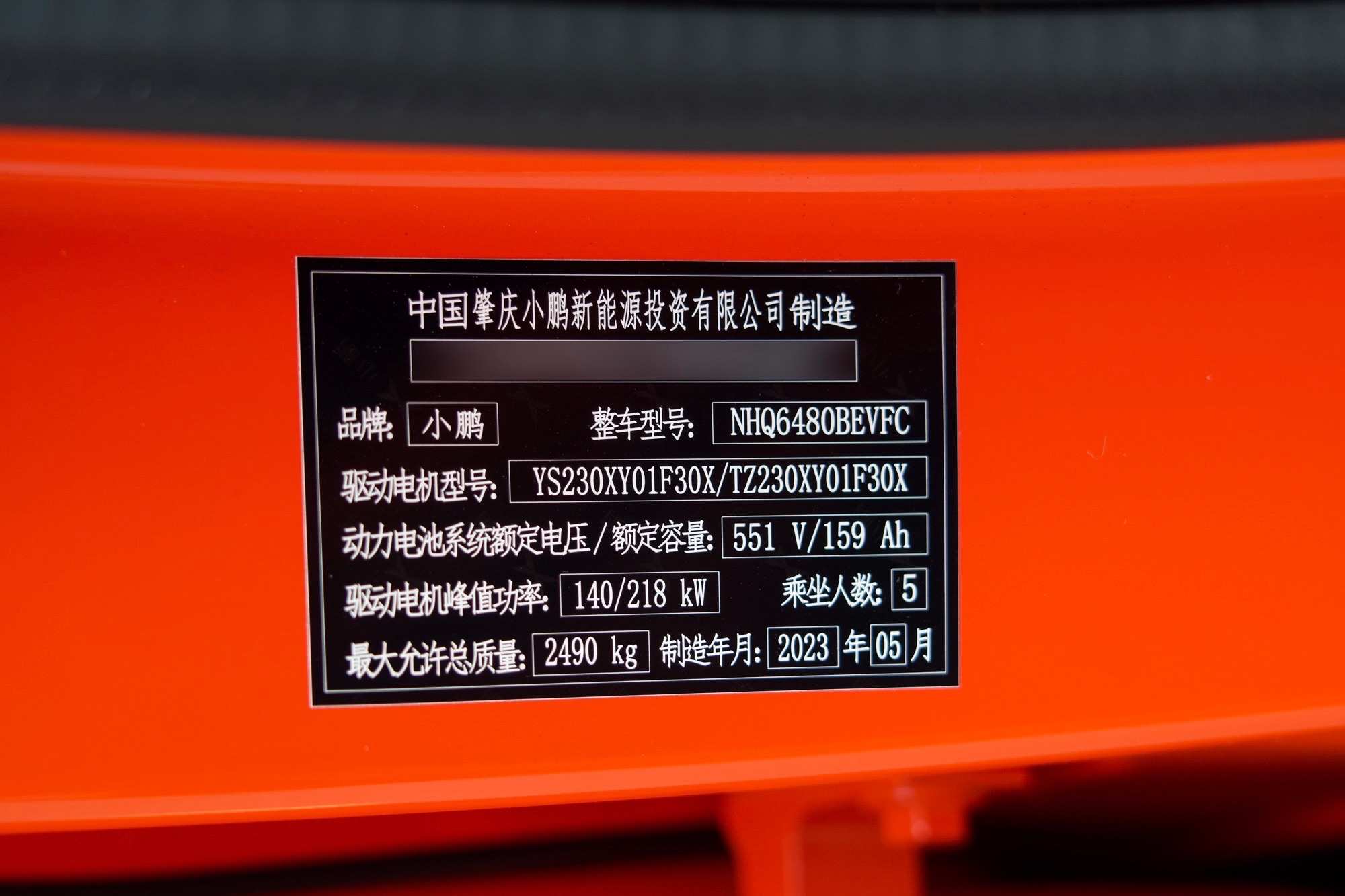
The weather was quite hot during the high-speed test, reaching 34 °C. We turned on the air conditioner according to the 42Test standard, set to 22 °C, two levels of wind power, and A/C was activated. The front and rear tyre pressure was adjusted to the recommended cold tyre 2.5/2.7 Bar. The drive mode was set to standard, energy recovery was set to ‘high’, and we started the endurance test straight away.
We actually drove 475.9 km on the highway, and when the test ended, the display showed that there were still 37 km WLTP of endurance mileage left, which is an excellent outcome.
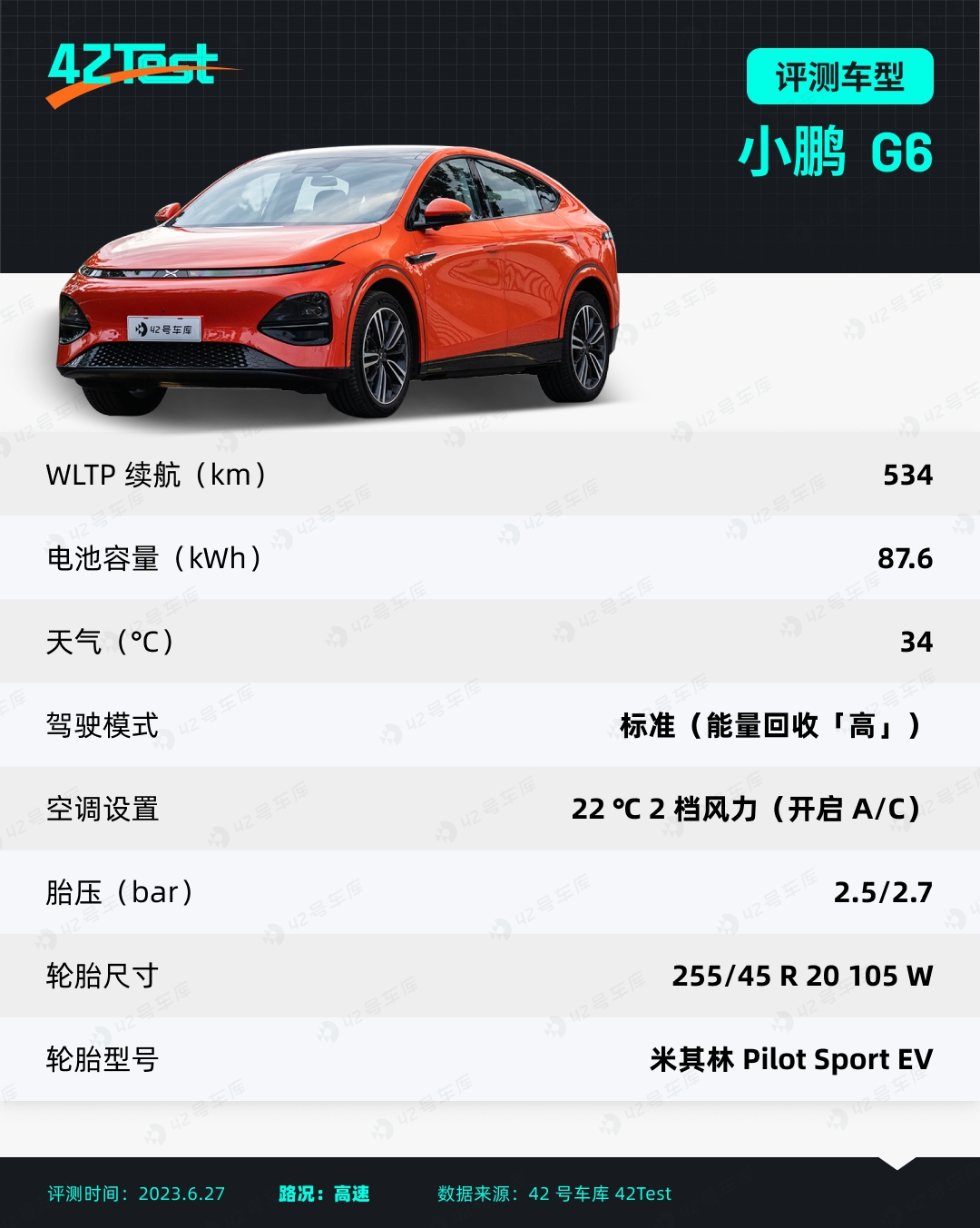
Another point worthy of praise is the solid endurance of the XPeng G6. Throughout the test, the actual/display endurance ratio of XPeng G6 was 1:1.04, which means displayed and actual endurance were almost identical. At the same time, it could be inferred that if the XPeng G6 was driven until it completely ran out of power, its endurance capacity should be around 513.5 km.

For a dual motor four-drive model, the power consumption performance of 16.3 kWh/100 km and the high-speed endurance capability of over 500 km are indeed exceptional.

City Endurance: “Reverse False Marking”
Later, we carried out a city road endurance test. After fully charging the XPeng G6, the displayed WLTP was 535 km endurance.
On the day of the city road endurance test, the weather was even hotter, reaching 37 °C. We turned on the air conditioner according to the 42Test standard, set to 22 °C, two levels of wind power, and A/C was activated. The front and rear tyre pressure was adjusted to the recommended cold tyre 2.5/2.7 Bar. The drive mode was set to standard, energy recovery was set to ‘high’, and we began the endurance test thereafter.
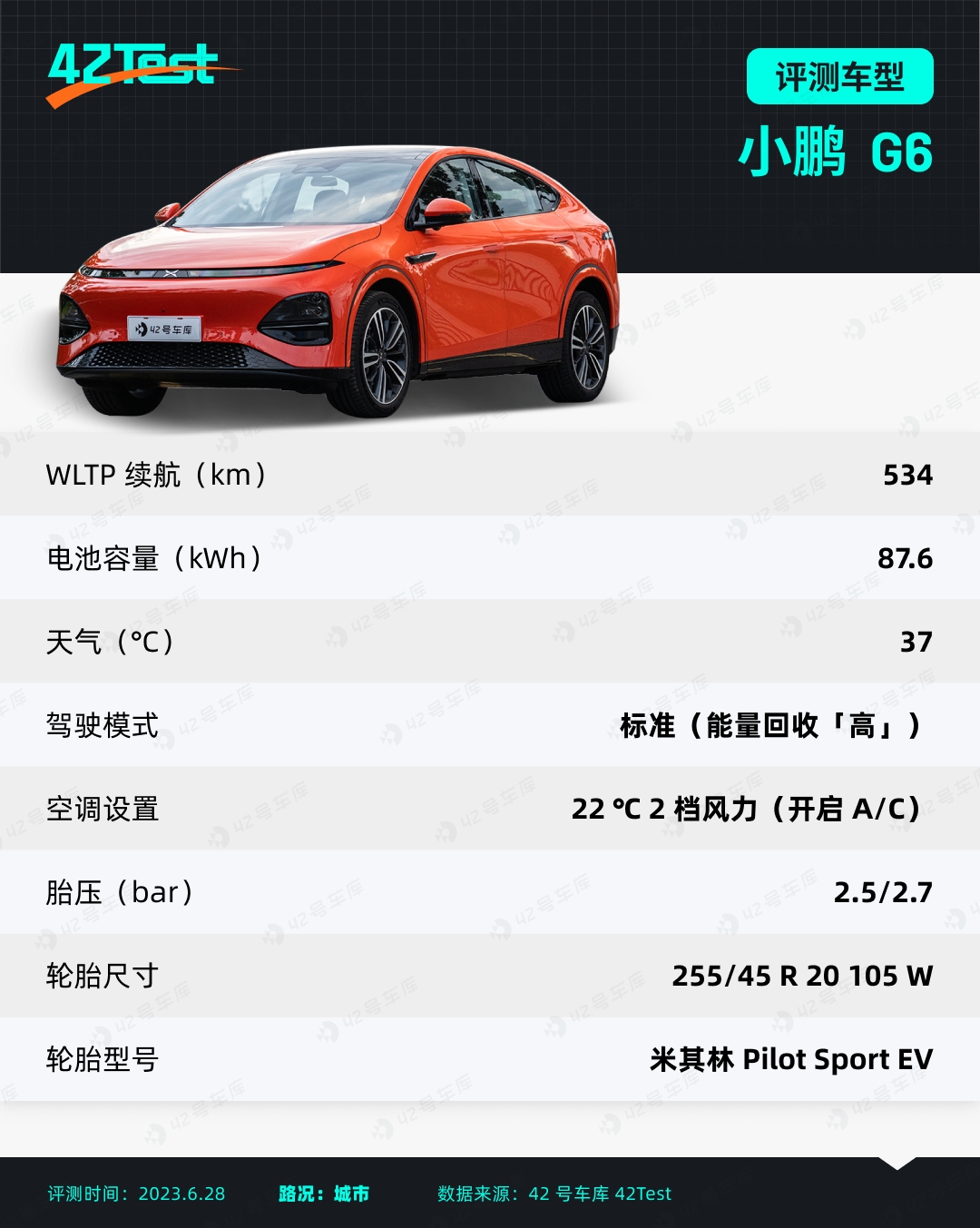
Our city road test route also followed the 42Test standard, driving a circle around the Shanghai outer ring (100 km), and then driving 50 km on city ground roads, which basically represents daily car usage scenarios.
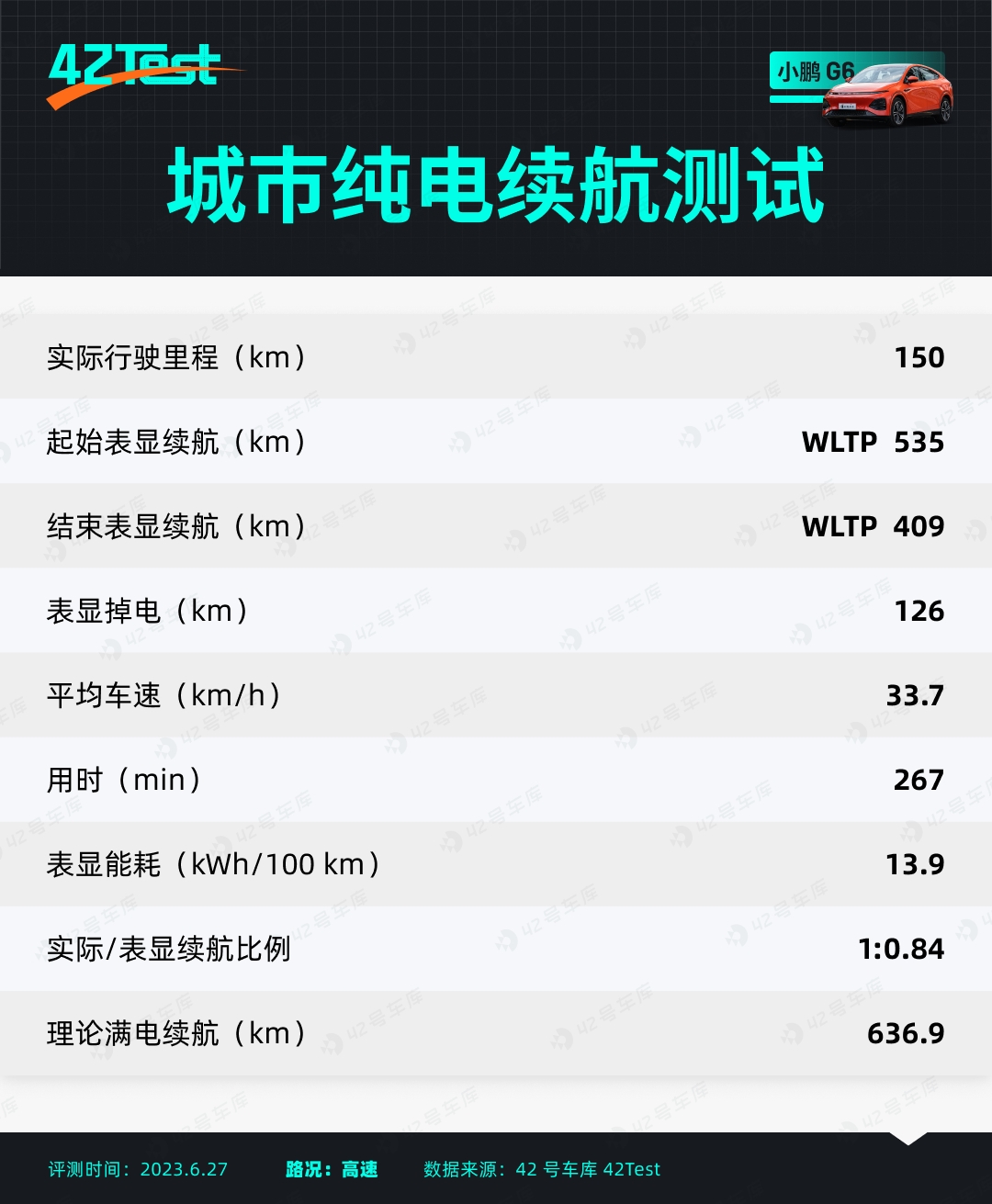
The result of the city endurance test was also very impressive. After 150 km of city endurance, the displayed endurance only reduced by 126 km, proving it indeed had a “reverse false marking”. Additionally, the dual motor four-drive model exhibited very energy-efficient performance throughout the entire test process, yielding as little as 13.9 kWh/100 km of power consumption, which is truly outstanding.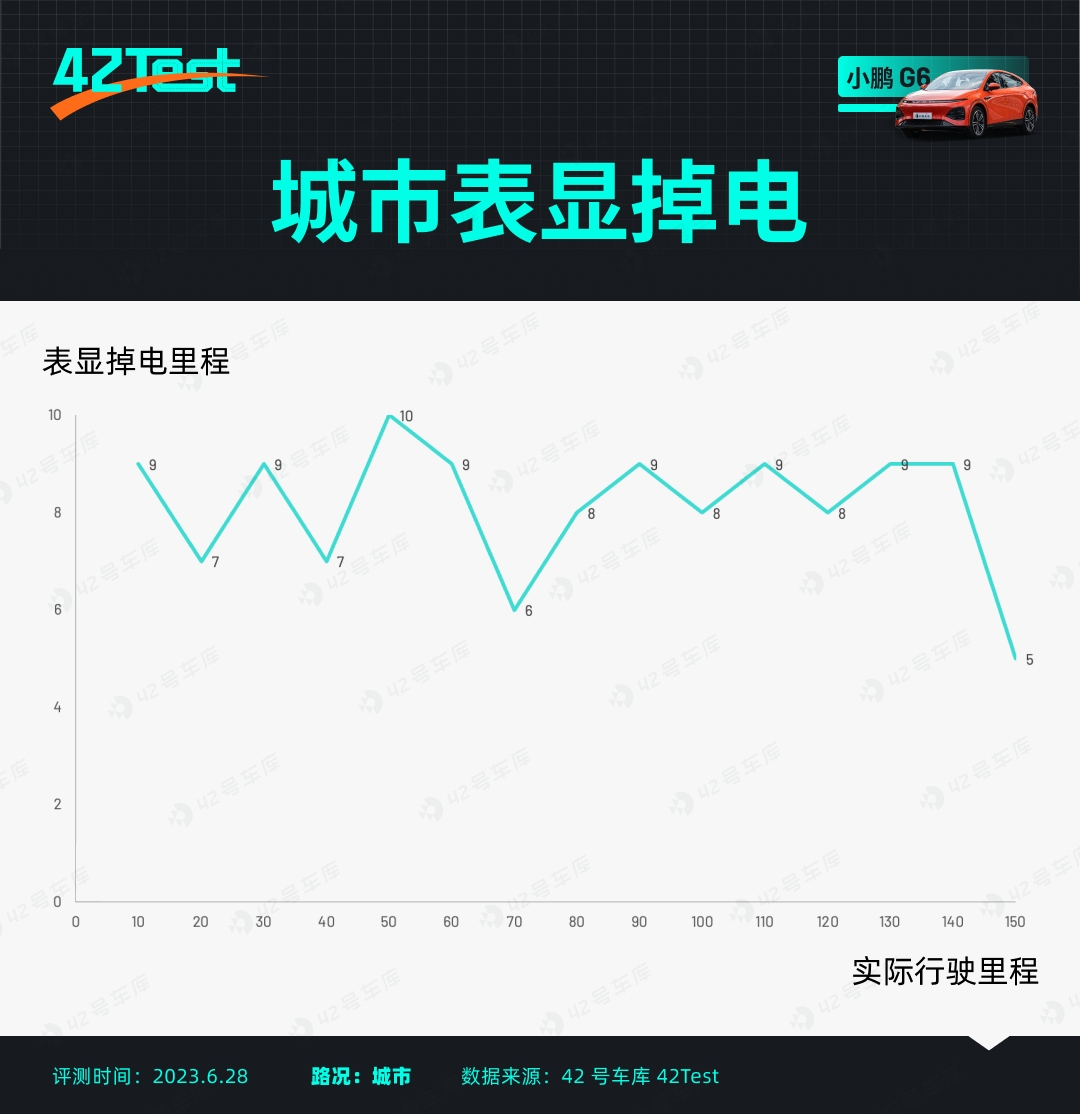
By extrapolation, the XPeng G6’s actual city range can reach up to 636.9 km. If you’re using the G6 as your daily commuter, it’s believable that a single charge can last for two weeks.
Charging Test: Full charged in 40 minutes, exceeding power of 280 kW
After the high-speed endurance test, we headed straight to the XPeng S4 superfast charging station to test the charging performance of G6.
The verdict is clear: very high charging speed. It took a total of 40 minutes to charge from 5% to 95%.

The fast charging capability is attributed to XPeng G6’s adoption of an 800 V high-voltage SiC platform, with a 3C cell included, which can realize a faster charging speed compared to 400 V platform models.
From the charging curve, we can witness that when the power reached 25%, the charging power hit a maximum of 285.8 kW. The peak charging power is slightly higher than the 280 kW displayed on XPeng’s official website.
During the entire charging process, the charging power of XPeng G6 consistently maintained a high level. By the time the charging ended at 95%, the charging power of XPeng G6 was still 43.1 kW, which is a very impressive performance.

We can observe from XPeng’s charging map that currently, there aren’t too many self-built S4 superfast charging stations. For instance, within the Shanghai outer ring, there are only 12 XPeng S4 superfast charging guns with just 6 stations. To experience faster charging, we still need further proliferation of charging pillars.
Exterior and Interior
Exterior design: Controversial
Let’s first look at the body size of XPeng G6. It measures 4753 mm in length, 1920 mm in width, and 1650 mm in height, with a wheelbase of 2890 mm. It is a medium-sized SUV, and these dimensions are almost exactly similar to those of Tesla Model Y.

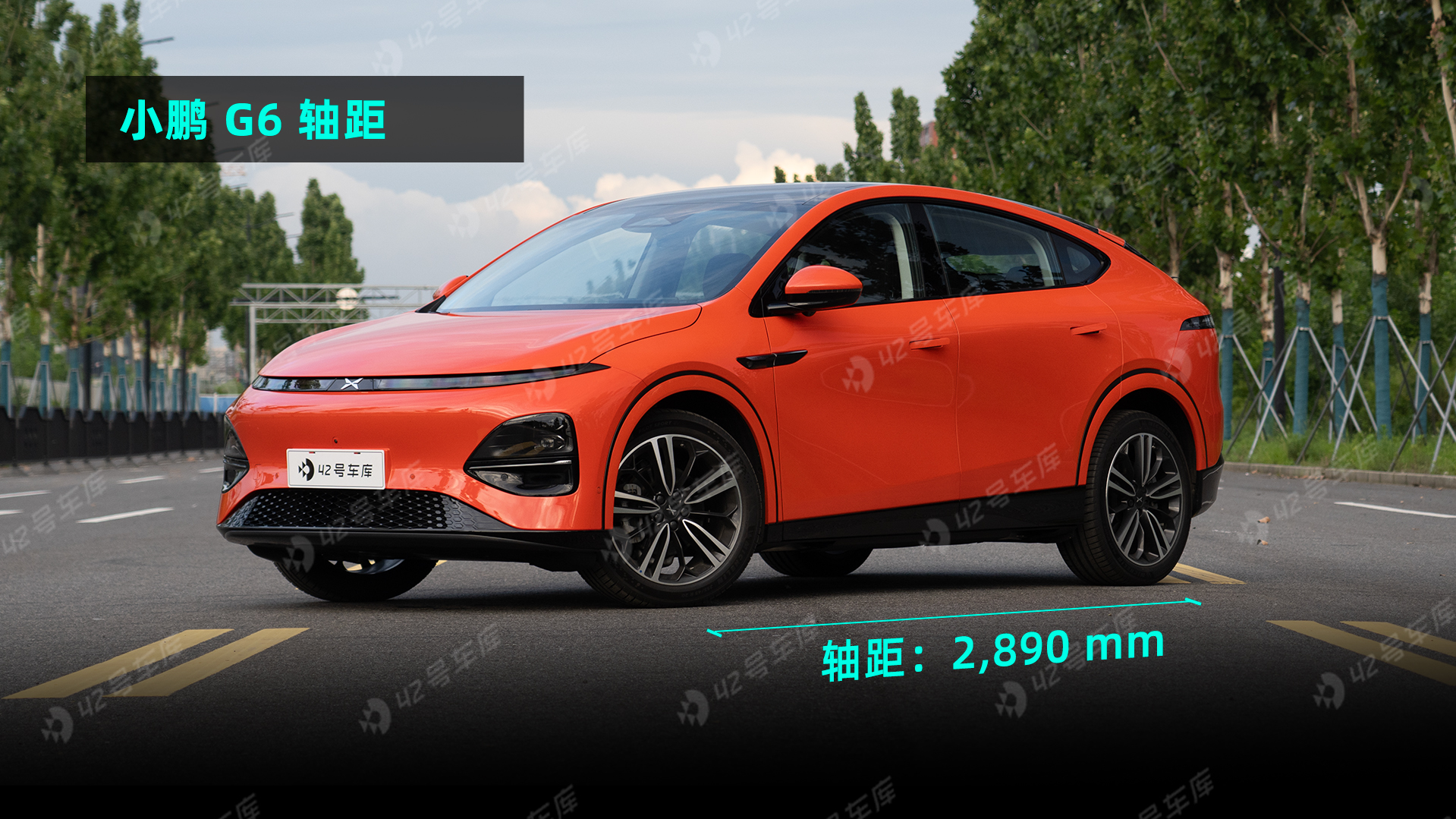
G6 has noticeable familial design elements, which have already achieved high recognition.
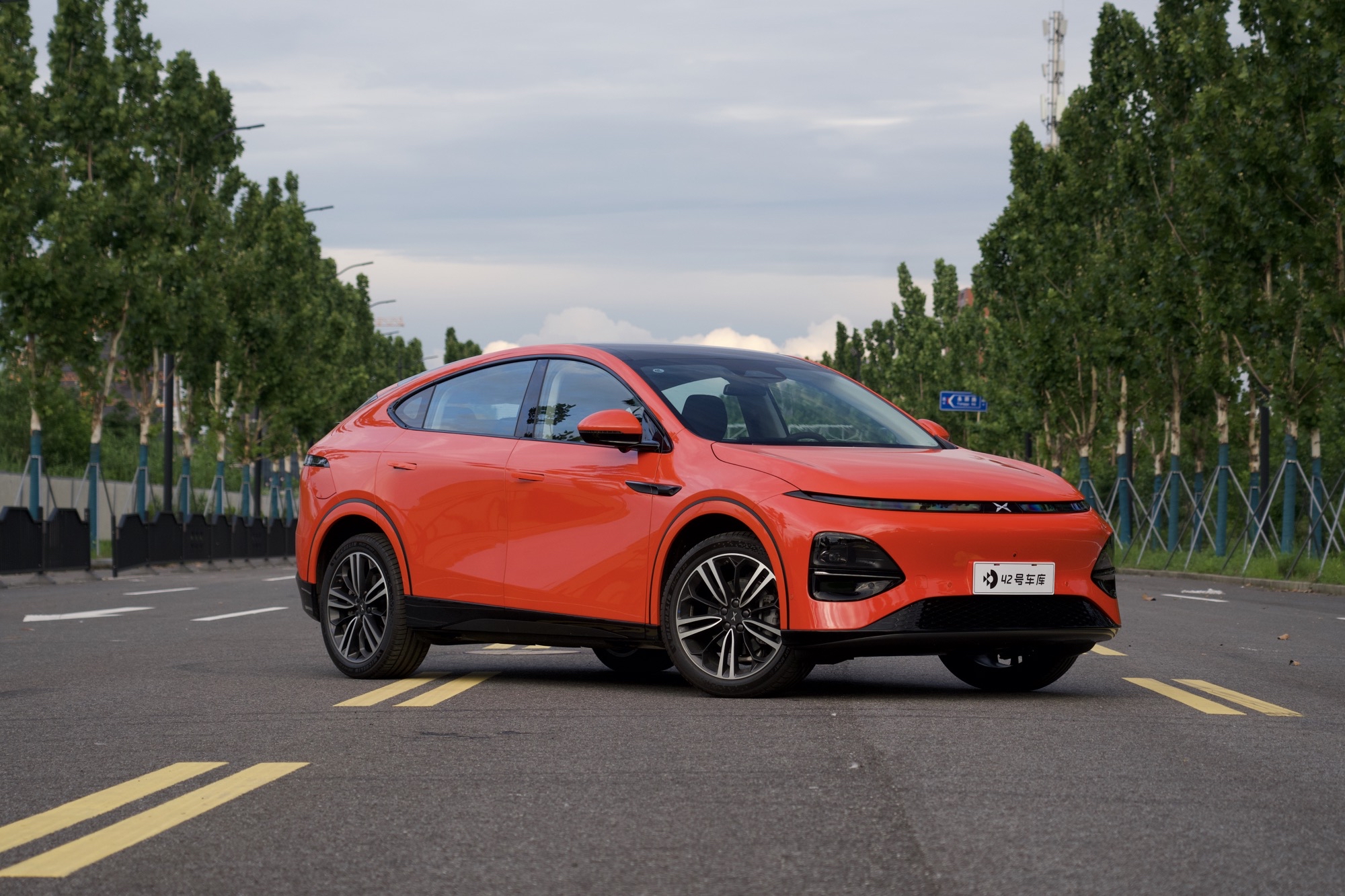 Split-headlights complemented by a horizontal daytime running light represent classic elements. However, the daytime running light is not one piece, the central position is partitioned by the XPeng logo.
Split-headlights complemented by a horizontal daytime running light represent classic elements. However, the daytime running light is not one piece, the central position is partitioned by the XPeng logo.

The car posture is low in the front and high in the back with a sleek back design, lending a dynamic look. Viewed from the side, the XPeng G6 gives off a chunky vibe. At this point, the 20-inch wheel hub doesn’t look that large.
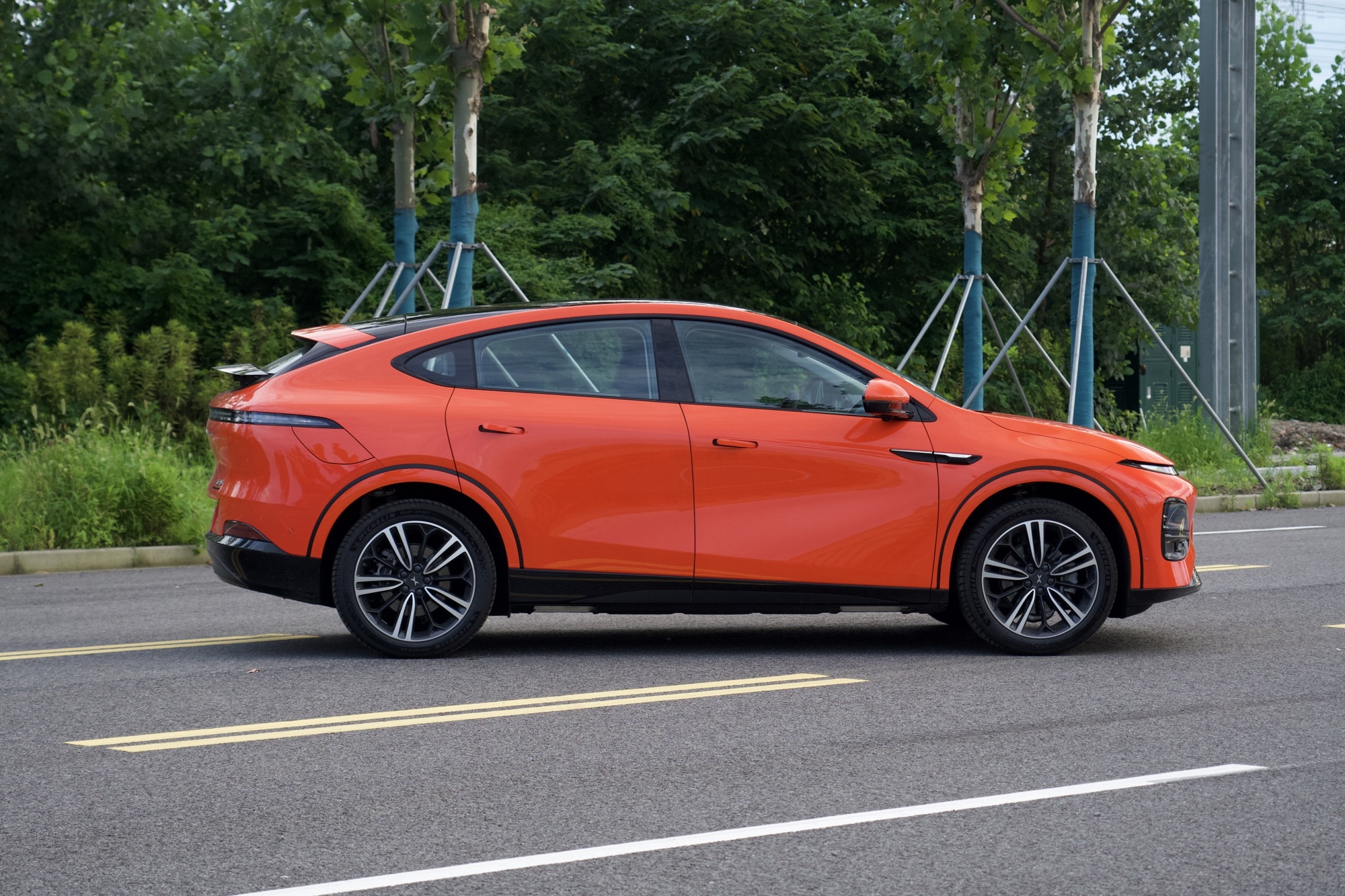
Around the rear, the chunkiness is even more evident with the vehicle’s rounded design accentuated by elongated tail lights that echo the facial design at the front.

The back window is noticeably small, in fact, all you see when you look at it through the car interior rearview mirror is a slit. This could amplify the headlight effects of cars at the back during the night, hindering rear-view. This also goes for the AVATR 11 whose back window design is also incredibly small but was rectified by fitting it with a streaming rearview mirror, resolving visibility issues.
The XPeng G6 we tested also comes with an optional power spoiler, which works voice-control operated for ascending and descending. Moreover, the vehicle will automatically open and close it based on speed, providing optimal downward pressure.
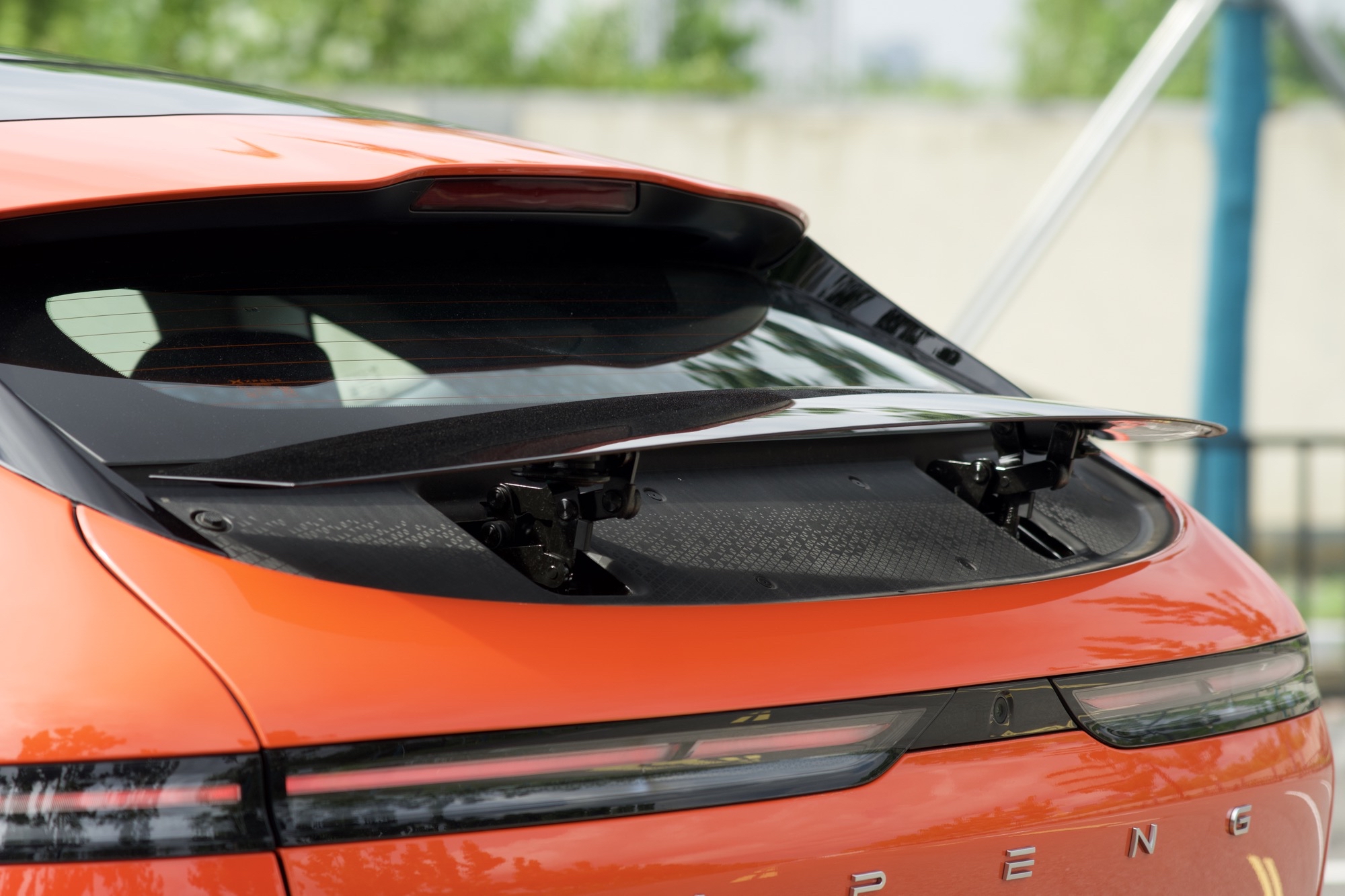
Compared to the eye-catching body color of Fusion Orange, the all-black design of the power spoiler significantly loses its allure. Standing even a slight distance away, the presence of the spoiler is barely noticeable.
Within its debut period, there has been a certain level of controversy surrounding the XPeng’s G6 external design. In my analysis, the probable reason could be due to the square-ish area below the windows devoid of line profiles that highlight the vehicle’s contours. Nonetheless, I am confident that designers considered other factors including vehicle performance and interior space.
Perhaps it would be fair to say that in the market segment of 200,000 RMB, external design isn’t top of the requirements list for consumers, instead, the practicality of the car is prioritized, even preferring versatility.
Interior and Vehicle System: A Combination of Design and Efficiency
Compared to its exterior design controversy, the interior design of XPeng G6 appears to be more refined, starting with the front row.

The interior design exudes a minimalistic modern feel free of excessive elements with every design aspect communicating its practicality.
The steering wheel design was revamped again, making it the fourth steering wheel design from XPeng. The two-spoke steering wheel design is simple, the multifunctional keys are the same as those on the G9, P7i, however, the grip is somewhat average, almost as though your thumb and the rest of the four fingers are “pinching” the steering wheel.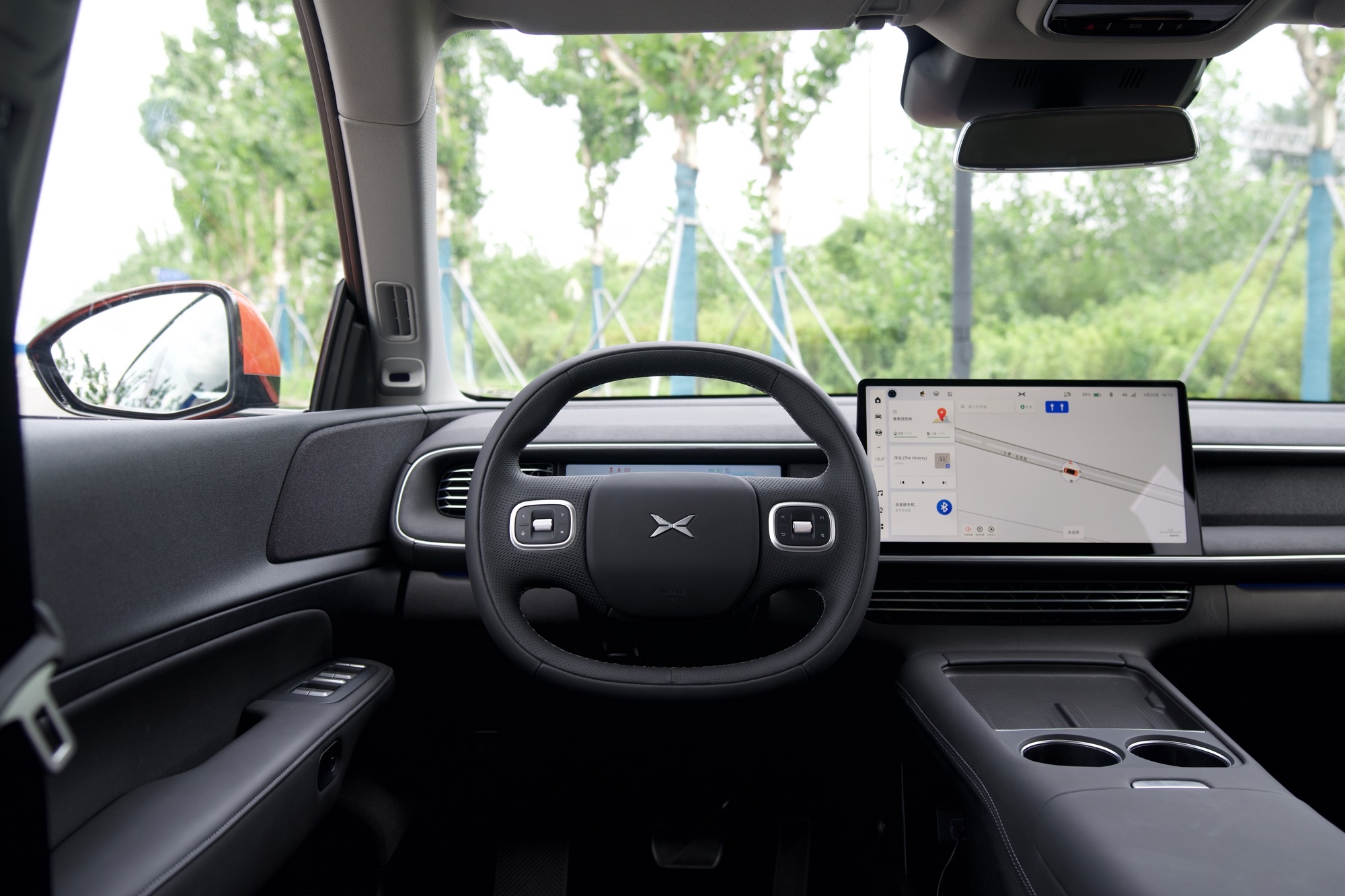
The indented design at three and nine o’clock on the steering wheel of the G9 and P7i models enhances the grip feel.
The instrument screen is 10.2 inches in size. Besides the navigation information being a bit crowded, other functions are quite usable. Simultaneously, the instrument screen also has a peep-proof feature, stopping the passenger from seeing the speedometer.
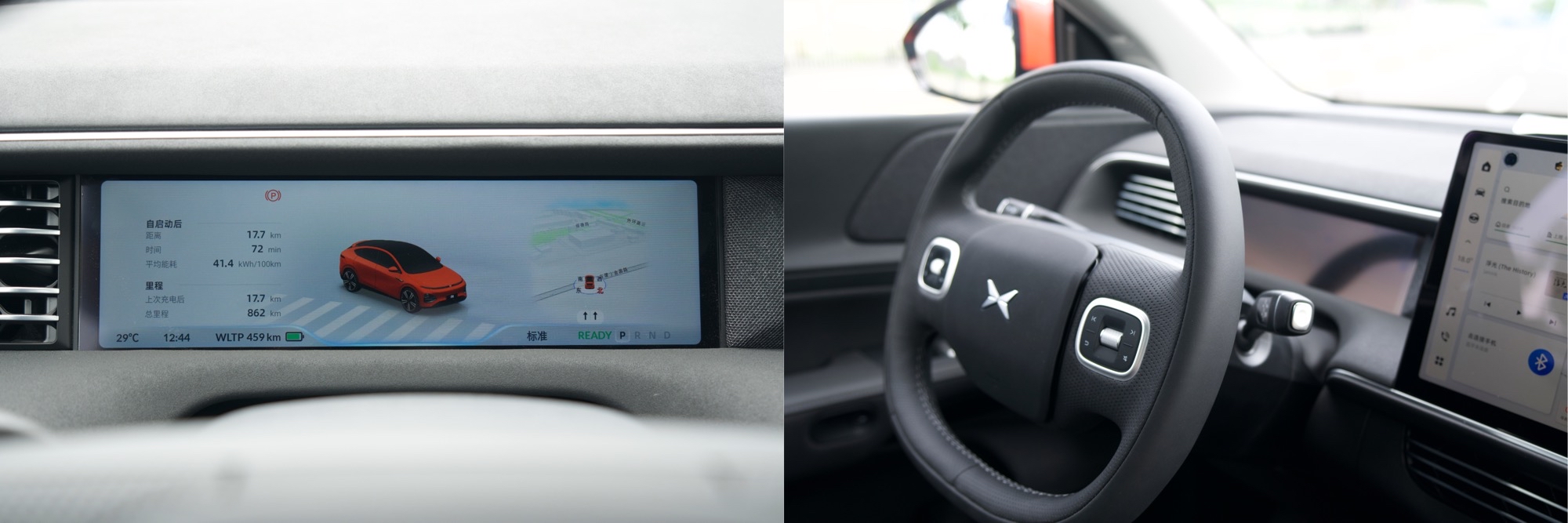
Indeed, the driver can concentrate solely on driving, undisturbed by the passenger.
With a size of 14.96 inches, the central control screen is equipped with a Qualcomm Snapdragon 8155 chip. In daily use, XPeng G6’s infotainment system is smooth enough.
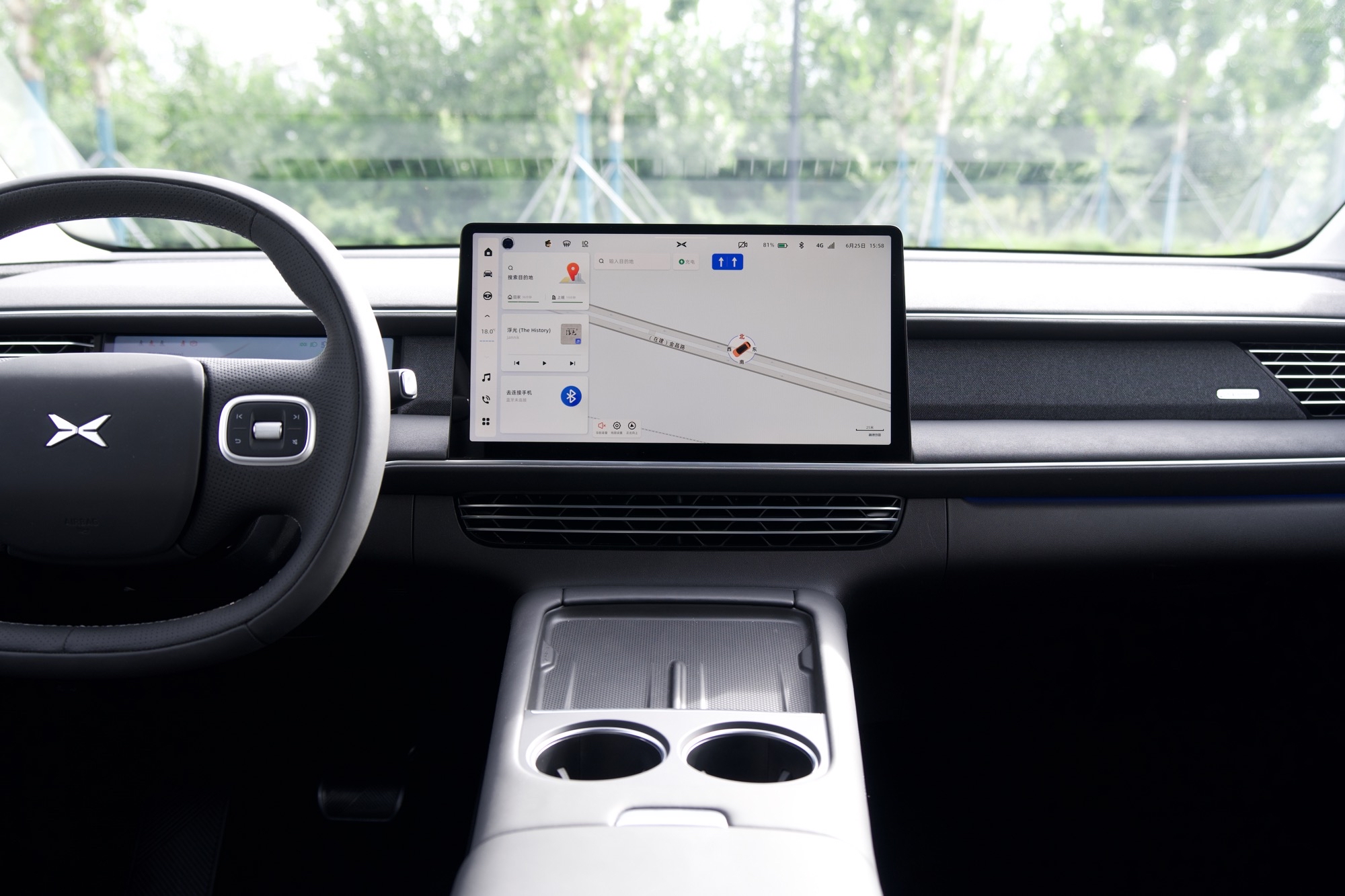
Navigation and music, these commonly used functionalities are satisfactory. QQ Music and NetEase Cloud Music can be switched at will, catering to a wider range of user’s needs.
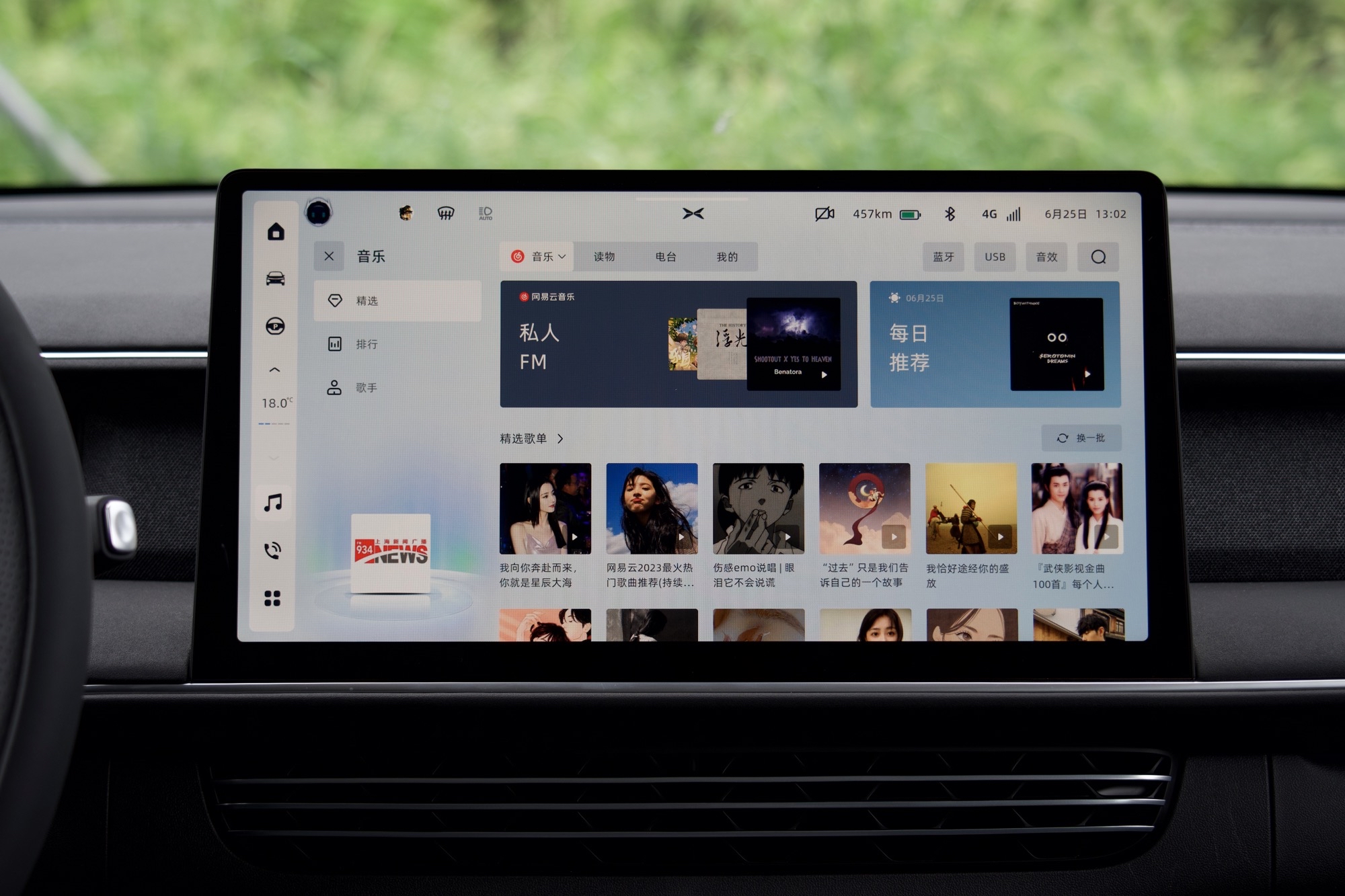
We estimate that XPeng G6’s sound system has 13 speakers. There are no sound manufacturer’s labels, only XPeng’s logo is attached at the position of the subwoofer in the trunk. The overall listening experience meets my expectations and aligns with the average standard of cars in this price range.
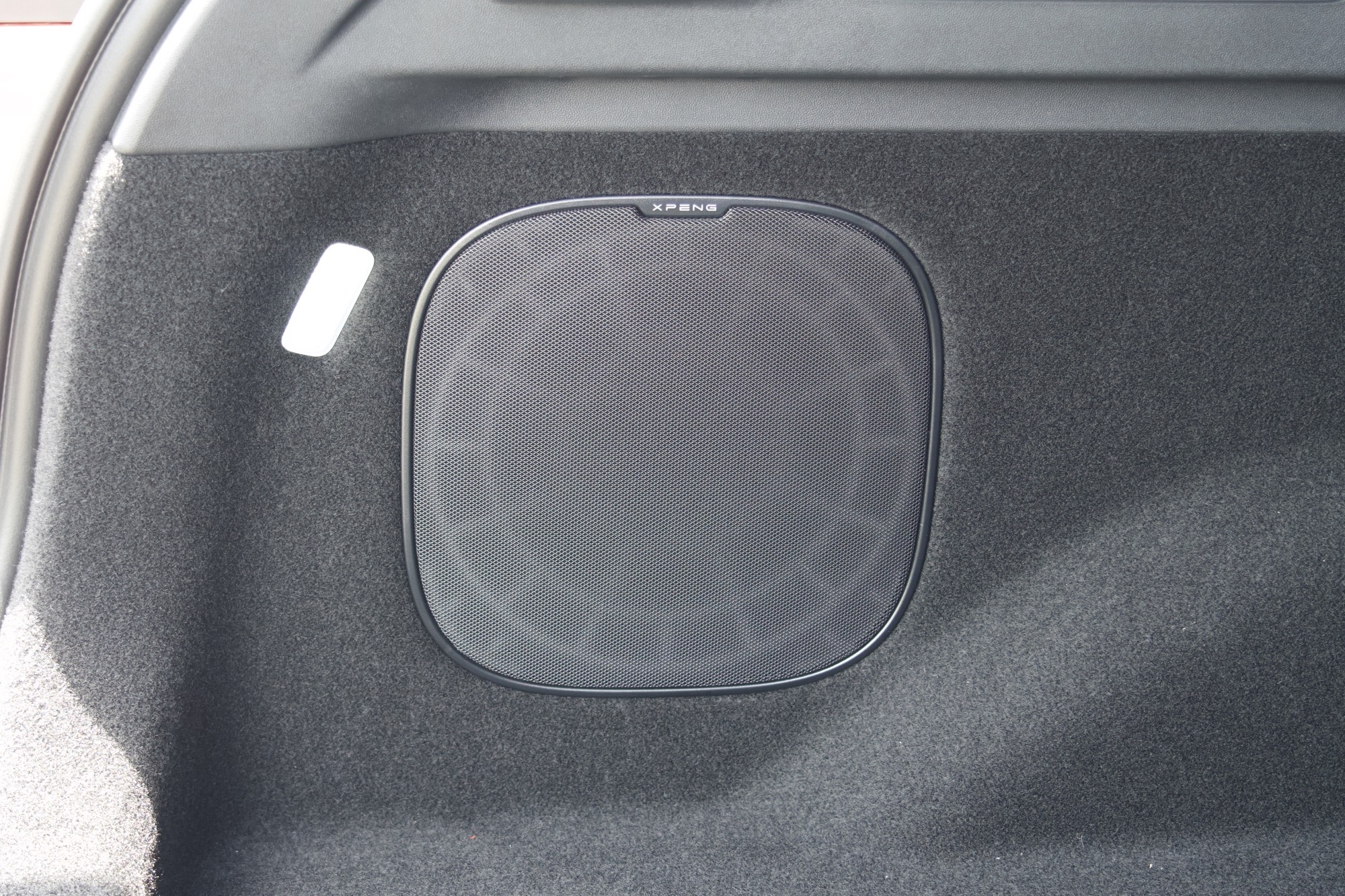
The voice feature that doesn’t require waking up for all scenes is also quite handy. If you have a request, you can directly communicate with “Little P,” which is very convenient.
Regarding the limitations of the infotainment system, firstly, some drive-related settings are not particularly easy to find, such as resetting the minor mileage doesn’t seem logically placed in the same interface as customer service phone number and system version number. Besides, as the speed of the car increases, “Little P’s” ears also become less sensitive; you need to raise the volume significantly for the voice assistant to recognize. If there are better noise reduction algorithms in the future, “Little P” can be awakened at a lower volume.
The seating experience is exceptionally comfortable as well, in some ways, even surpassing that of the G9. Firstly, the back support is significantly better, with very uniform force distribution; secondly, after adjusting the angle of the cushion, the front row seats still offer a high degree of comfort, making them more friendly for taller drivers; Additionally, the back ventilation of the seat is also in place.
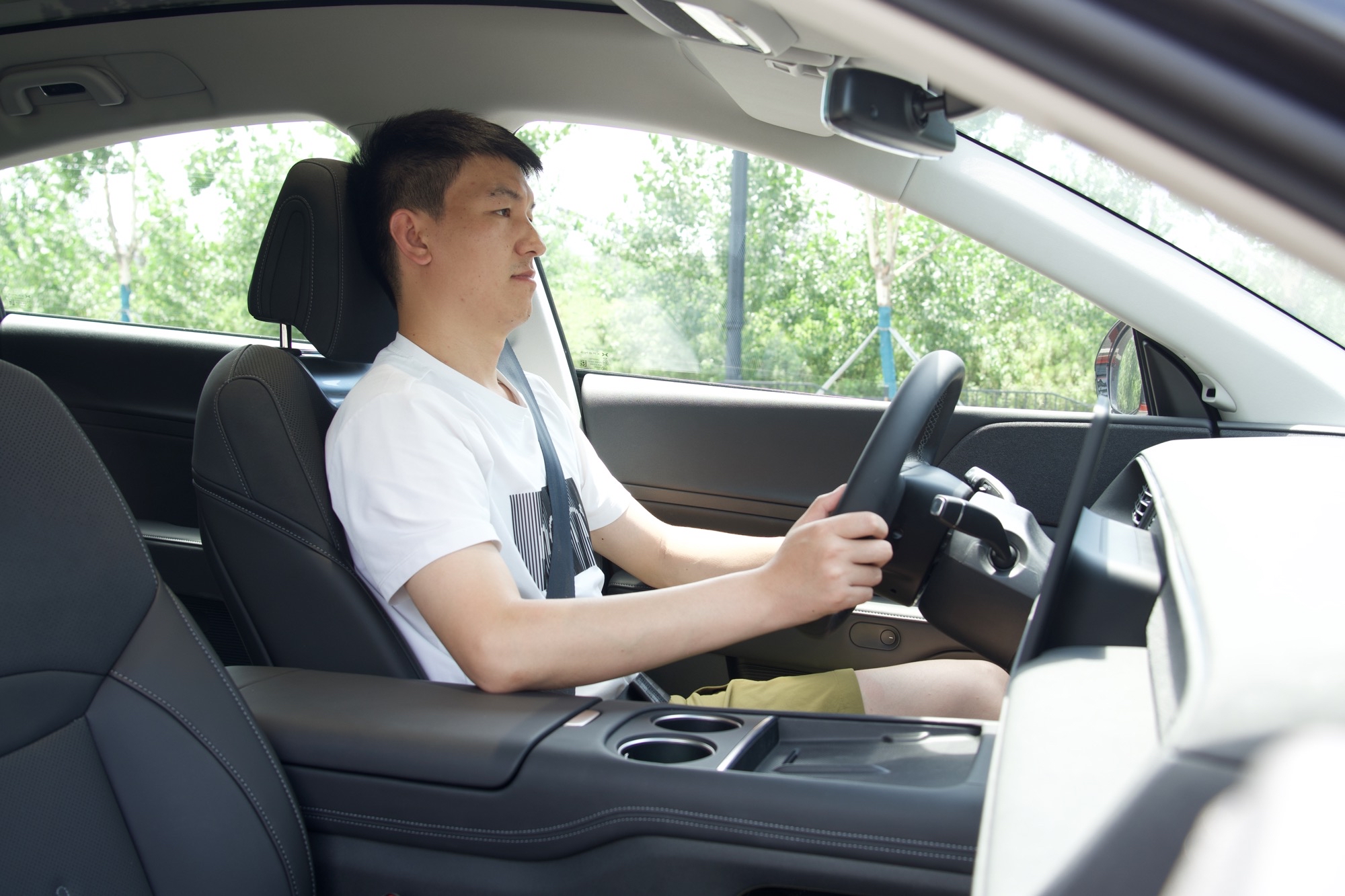 The seat adjustment buttons only have two options, namely adjusting the backrest and the seat cushion. However, to adjust the lumbar support, there is no physical button. Instead, it needs to be set on the screen, which is an ‘unintuitive’ design.
The seat adjustment buttons only have two options, namely adjusting the backrest and the seat cushion. However, to adjust the lumbar support, there is no physical button. Instead, it needs to be set on the screen, which is an ‘unintuitive’ design.
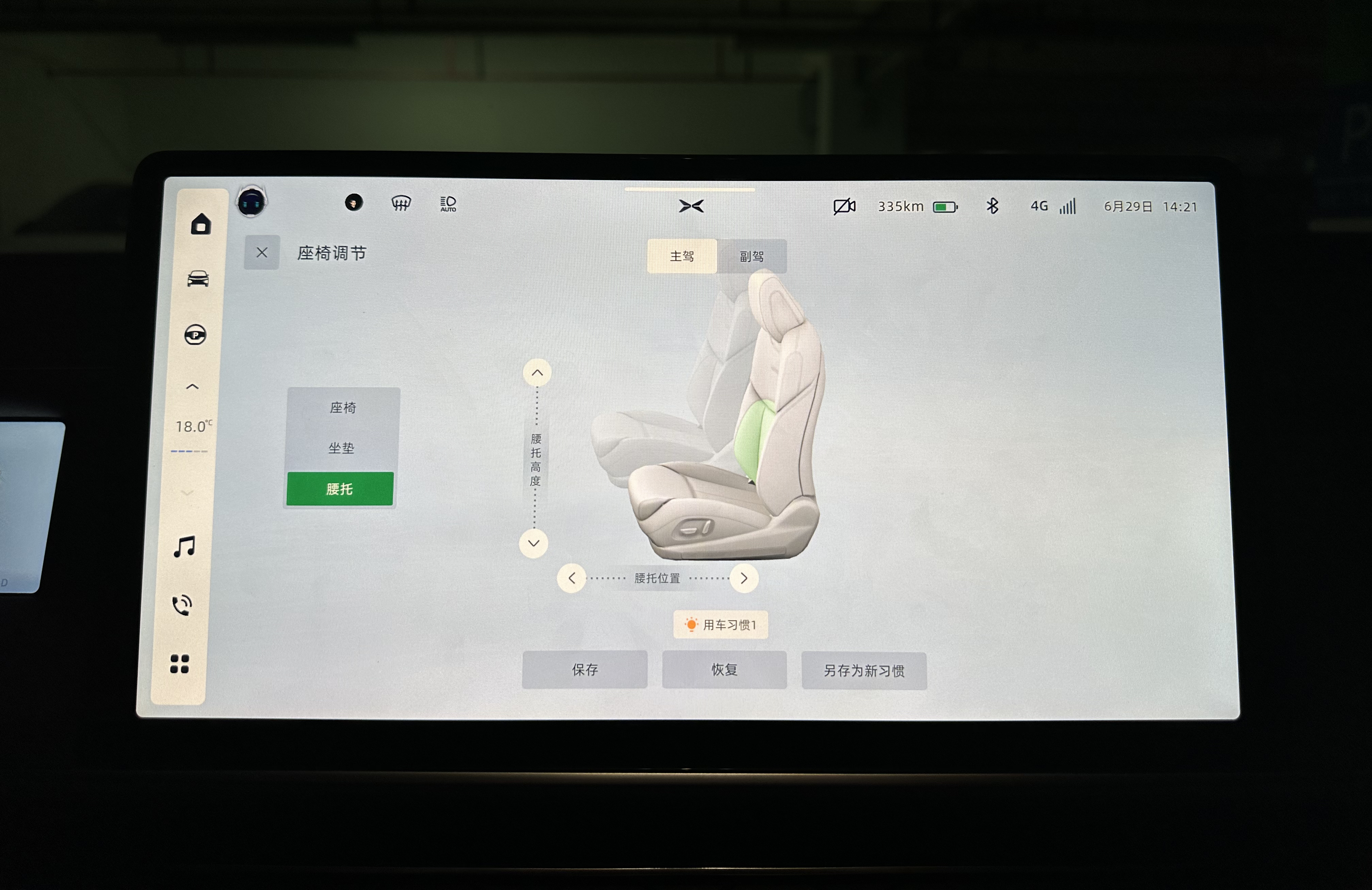
In terms of functional usability, the front row is equipped with two wireless charging slots, combined with air cooling. Two phones can be placed on the XPeng G9, and finally, the unintuitive operation of having only the left side capable of wireless charging has been improved.

Next, a highlight is that at the back of the left and right door panel storage boxes, there are mechanical switches for the doors. If the button electric switch cannot open the door, you can choose to directly use the mechanical switch.
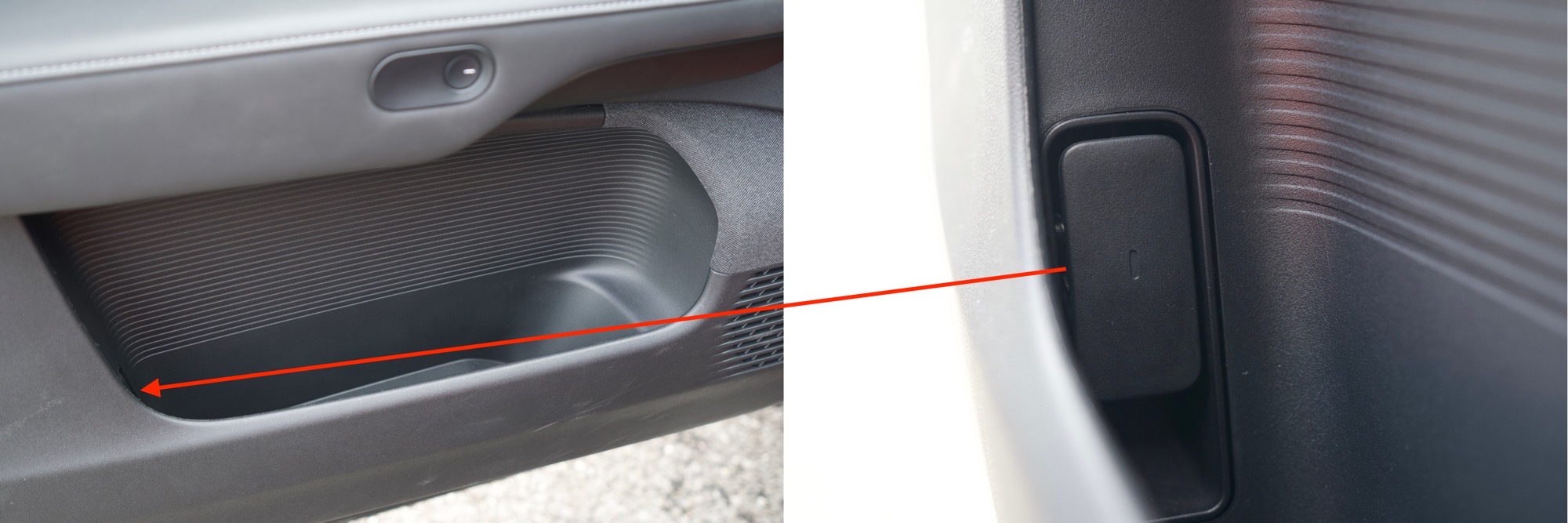
There are a few points that need to be noted in daily use.
- The XPeng G6, for greater seating space, does not come equipped with a glove box under the co-pilot seat.
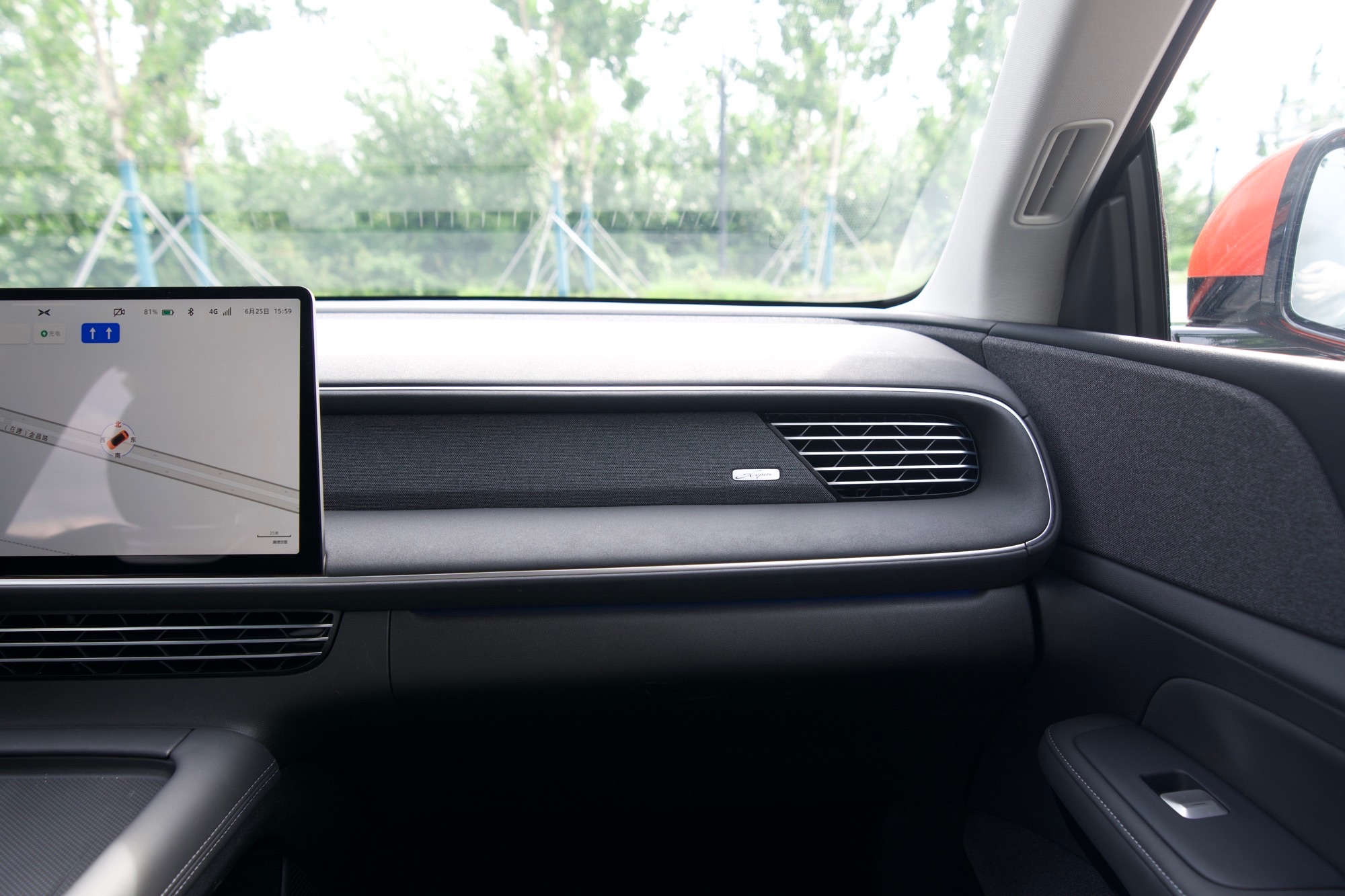
- The main driver’s mechanical window button can be easily accidentally pressed. When the left hand is moved away from the steering wheel, it naturally lands on the door panel, with the fingers falling precisely on the rear window button, rather than the front window button.
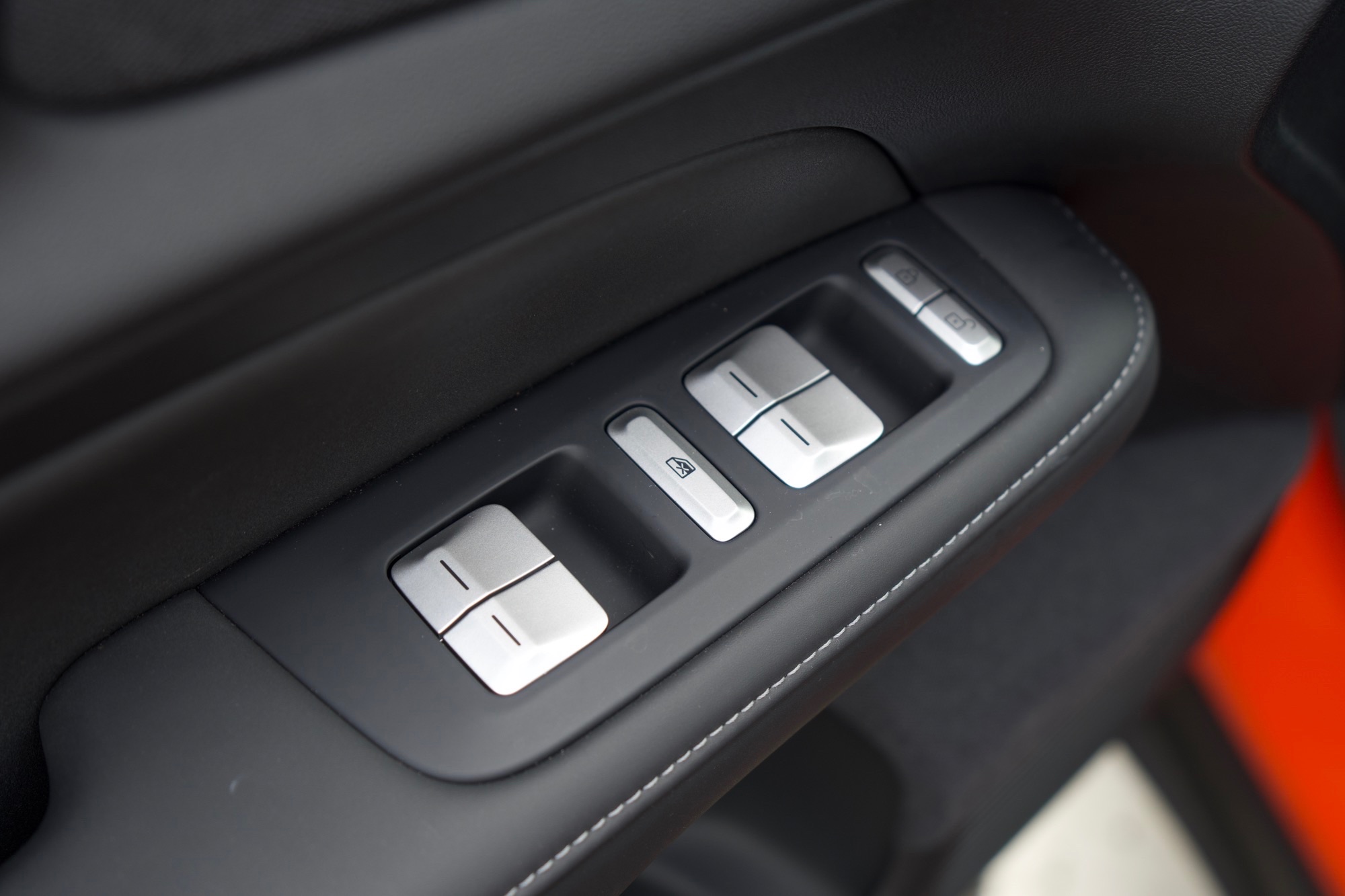
- XPeng designed a huge air vent for the G6, but the wind direction can only still be adjusted on the screen. Why adjust the wind direction on the screen? Because it was designed with a hidden vent. However, the G6’s air vent is not hidden, perhaps another ‘unintuitive’ design.
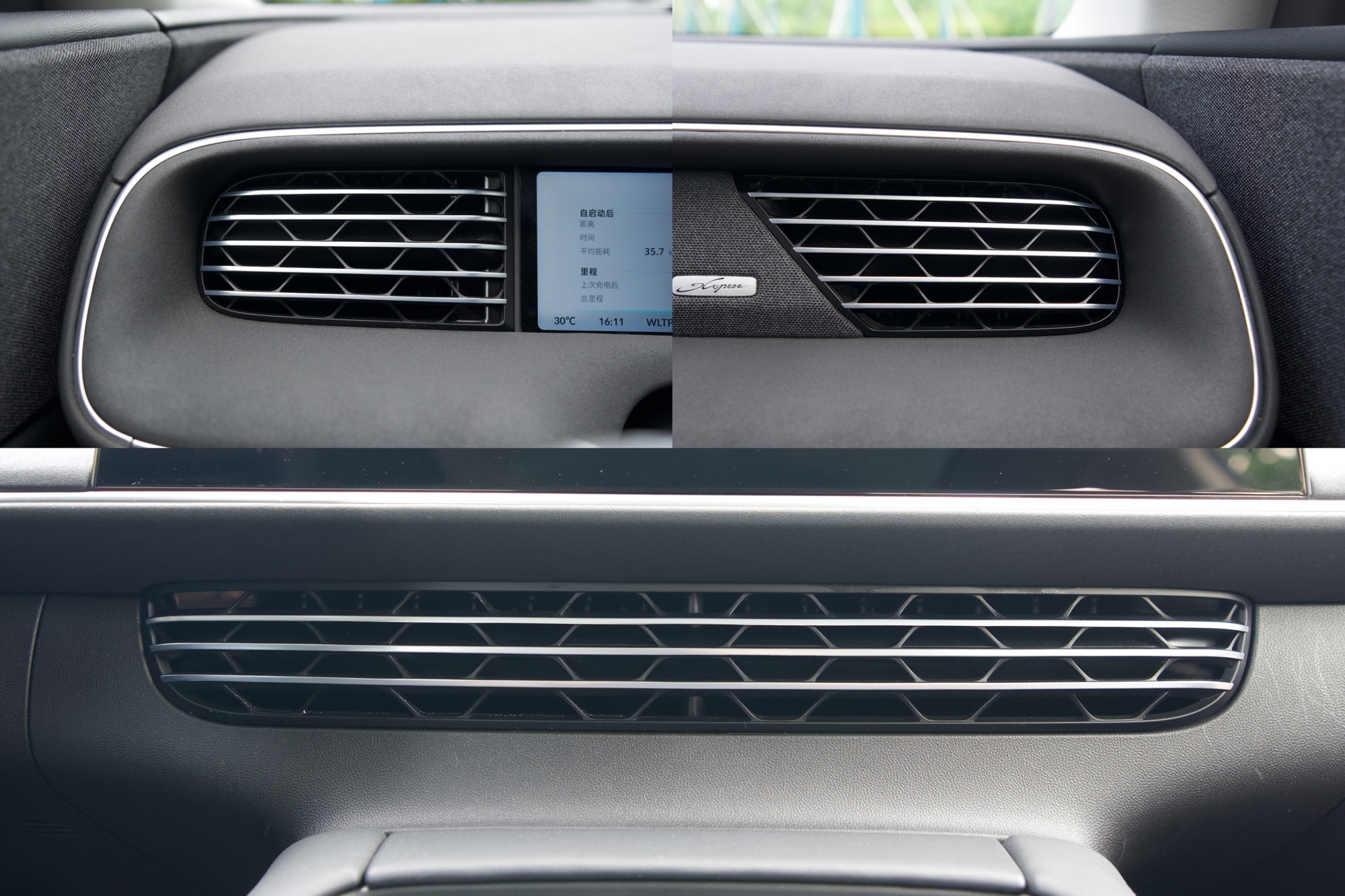
Looking at the rear seats, a pleasant surprise is its excellent vertical space.

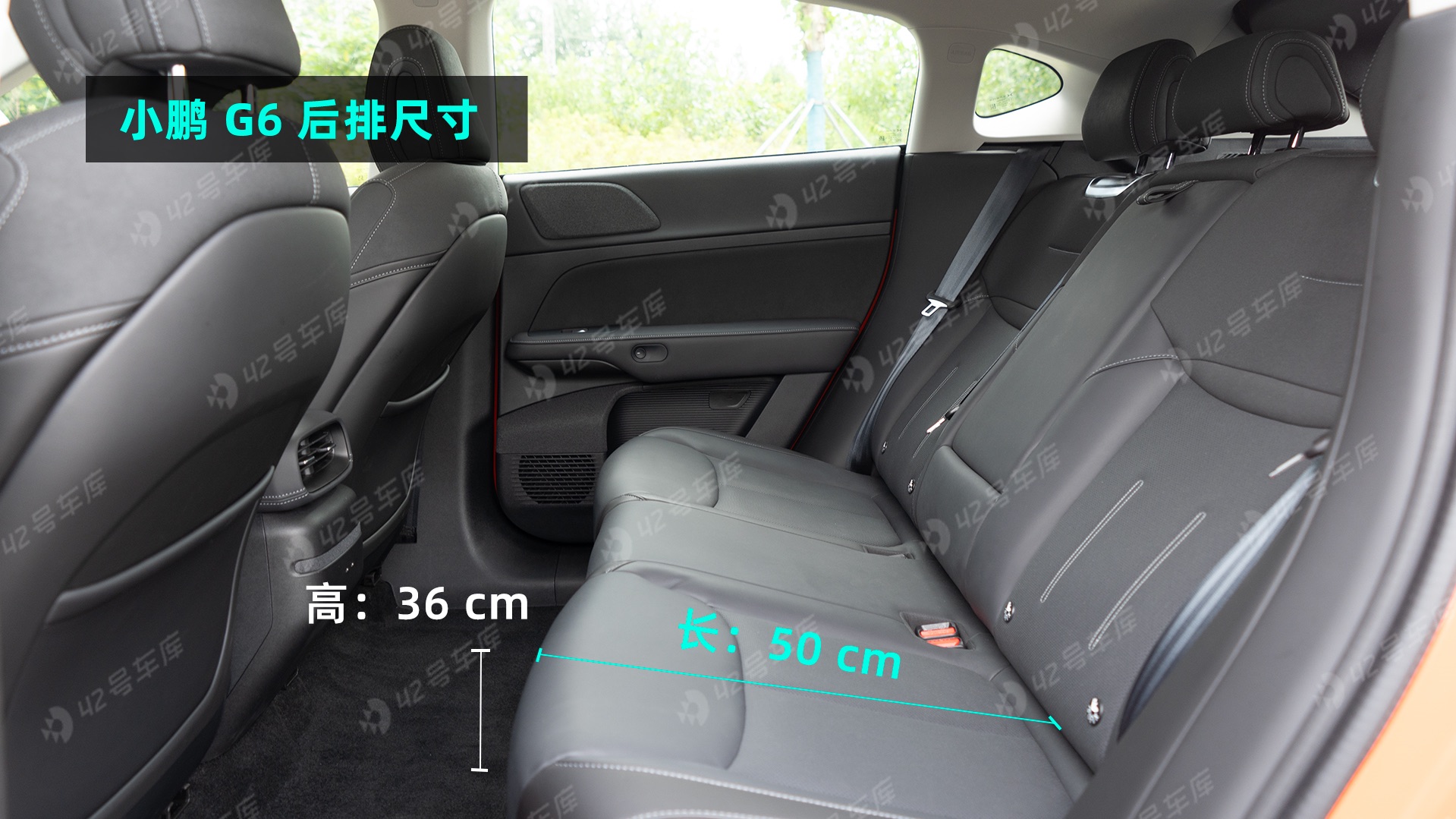
The seat performance is also quite good. The seat cushion is long enough, providing excellent support for the thighs. Combined with the adjustable rear backrest, you can almost sit in the car in a semi-reclining position. In addition, the rear seats remain relatively soft, providing a comfortable riding experience.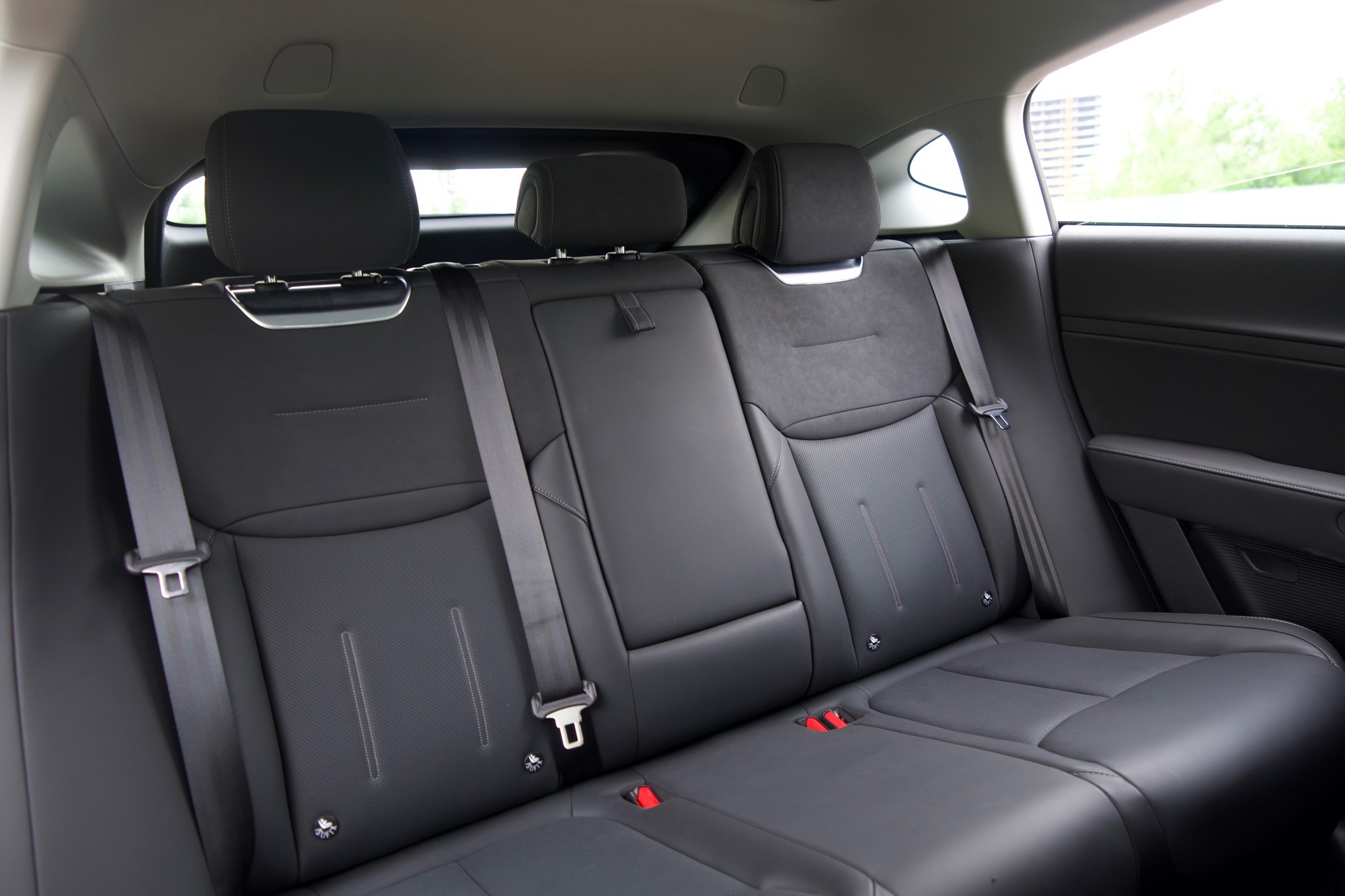
Moreover, the rear doors are equipped with mechanical switches. Once the plastic cover is removed and the rope is pulled, the rear door can be easily opened.
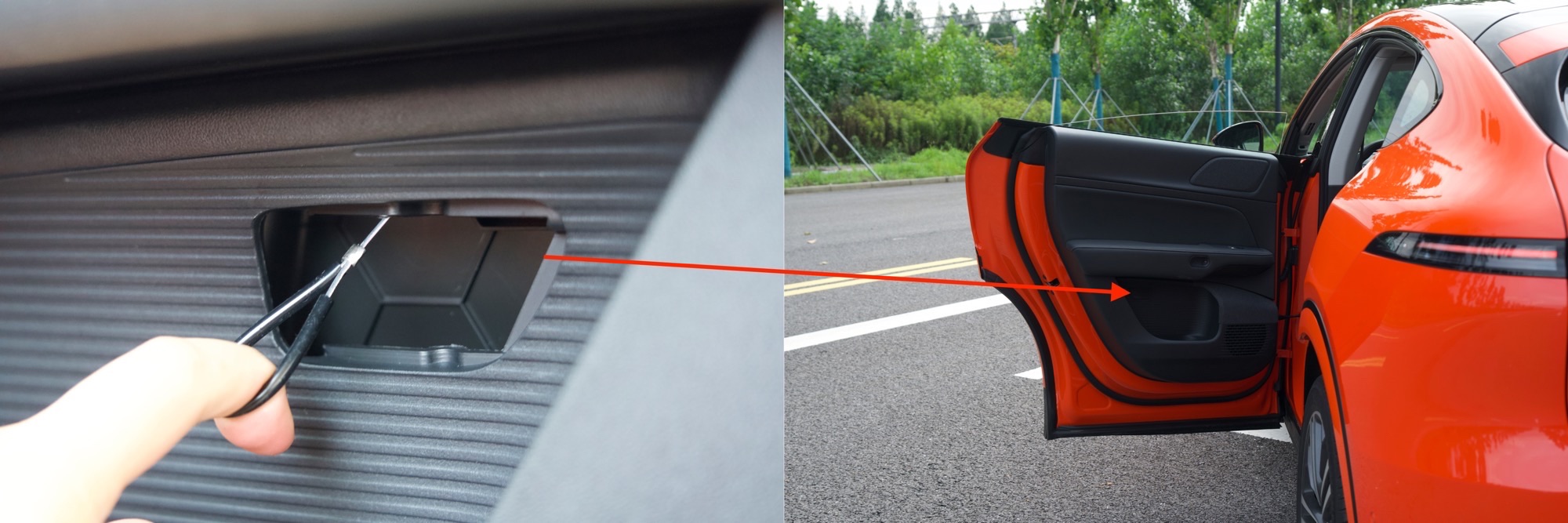
Finally, let’s talk about the trunk’s storage space. The XPeng G6’s trunk opening is quite large, and it’s very level.

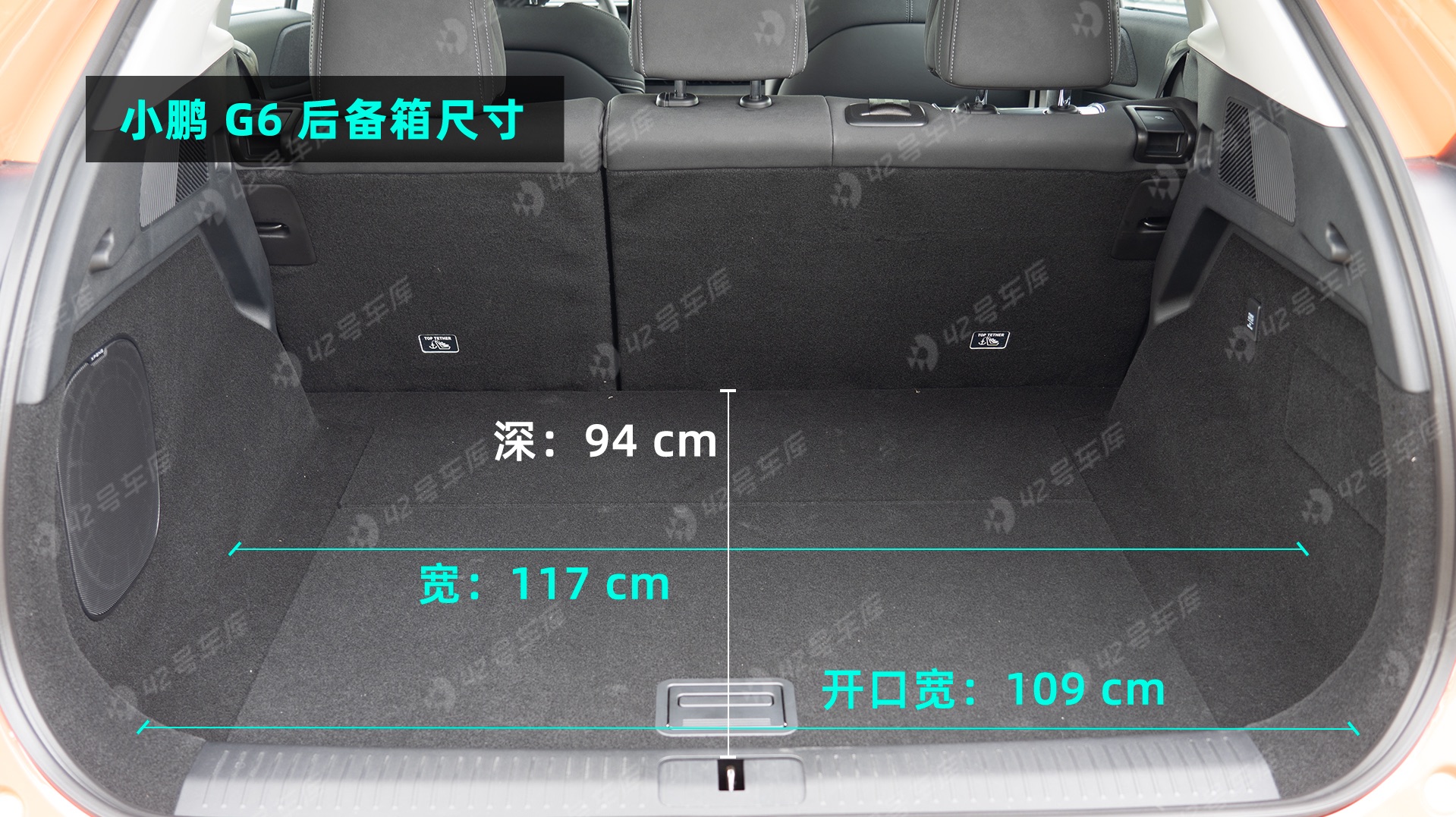
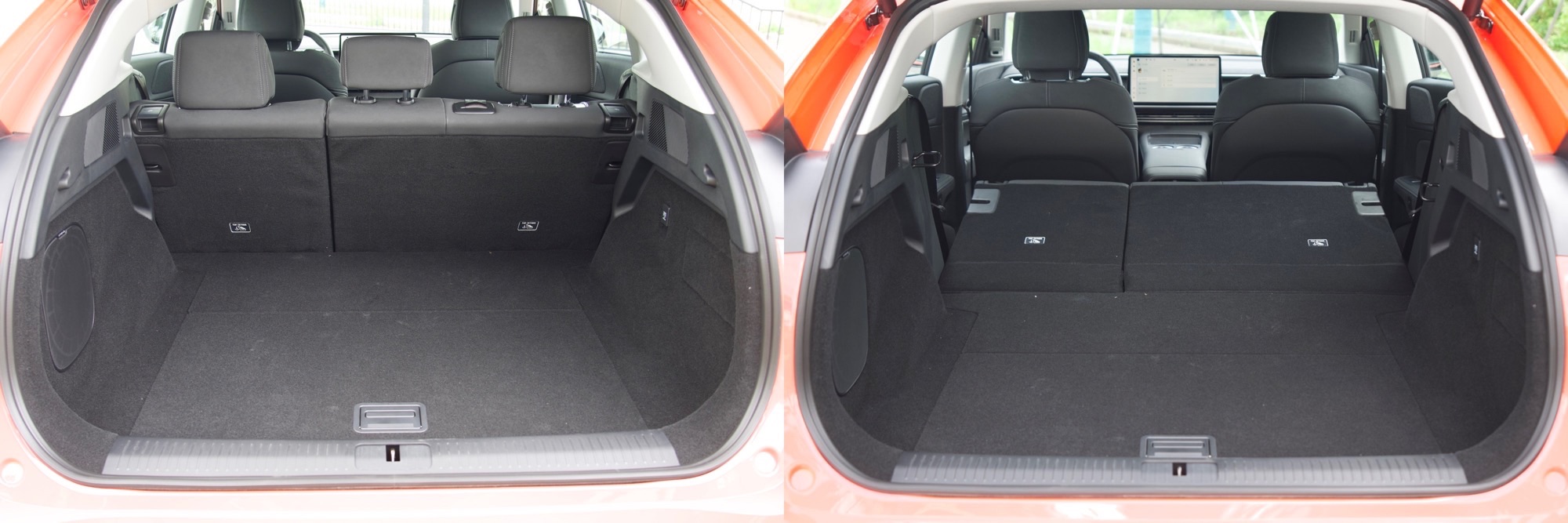
Beneath the trunk deck, there is a not-so-small storage space.
Because XPeng prioritizes more interior space, the car does not come equipped with a front trunk and co-pilot glove box.
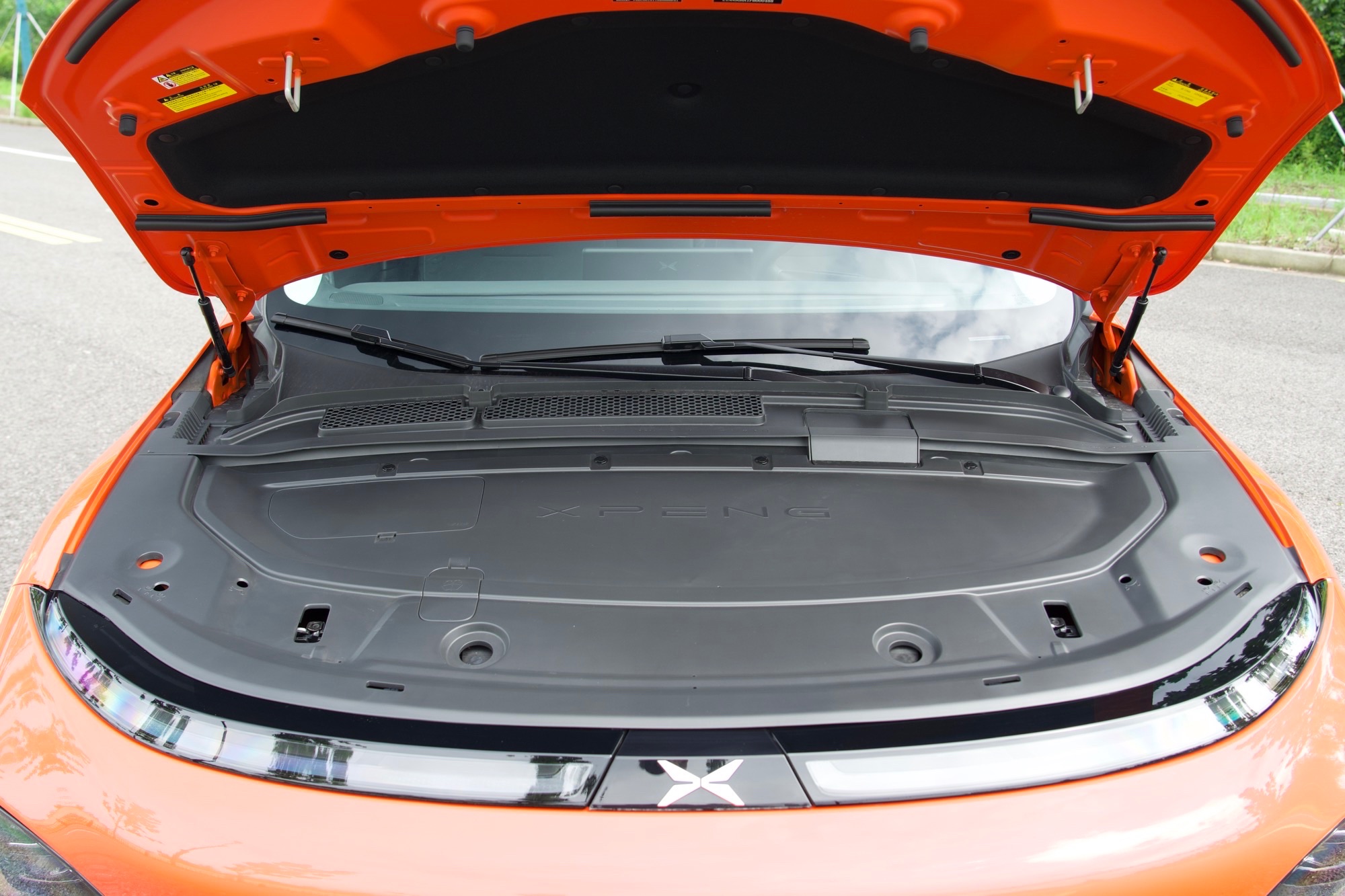
Driving Assistance: Dual LiDAR, NGP in Urban and High-Speed Areas
In our most recent test, we intensively used the XPeng G6’s driving assistant system. This system uses the same driving assistance hardware as the commercially available G9 and P7i, with the following specifications:
- 2 LiDAR sensors
- 5 millimeter-wave radars
- 7 driving assistance cameras
- 4 round-view cameras
- 12 ultrasonic radars
- 2 Nvidia Orin-X chips, with a computing power of 508 TOPS
This driving assistance system can achieve urban and high-speed NGP (Navigation Guided Pilot), as well as VPA-L car park memory parking. XPeng has packaged these three functions as the intelligent driving assistant for all scenarios.
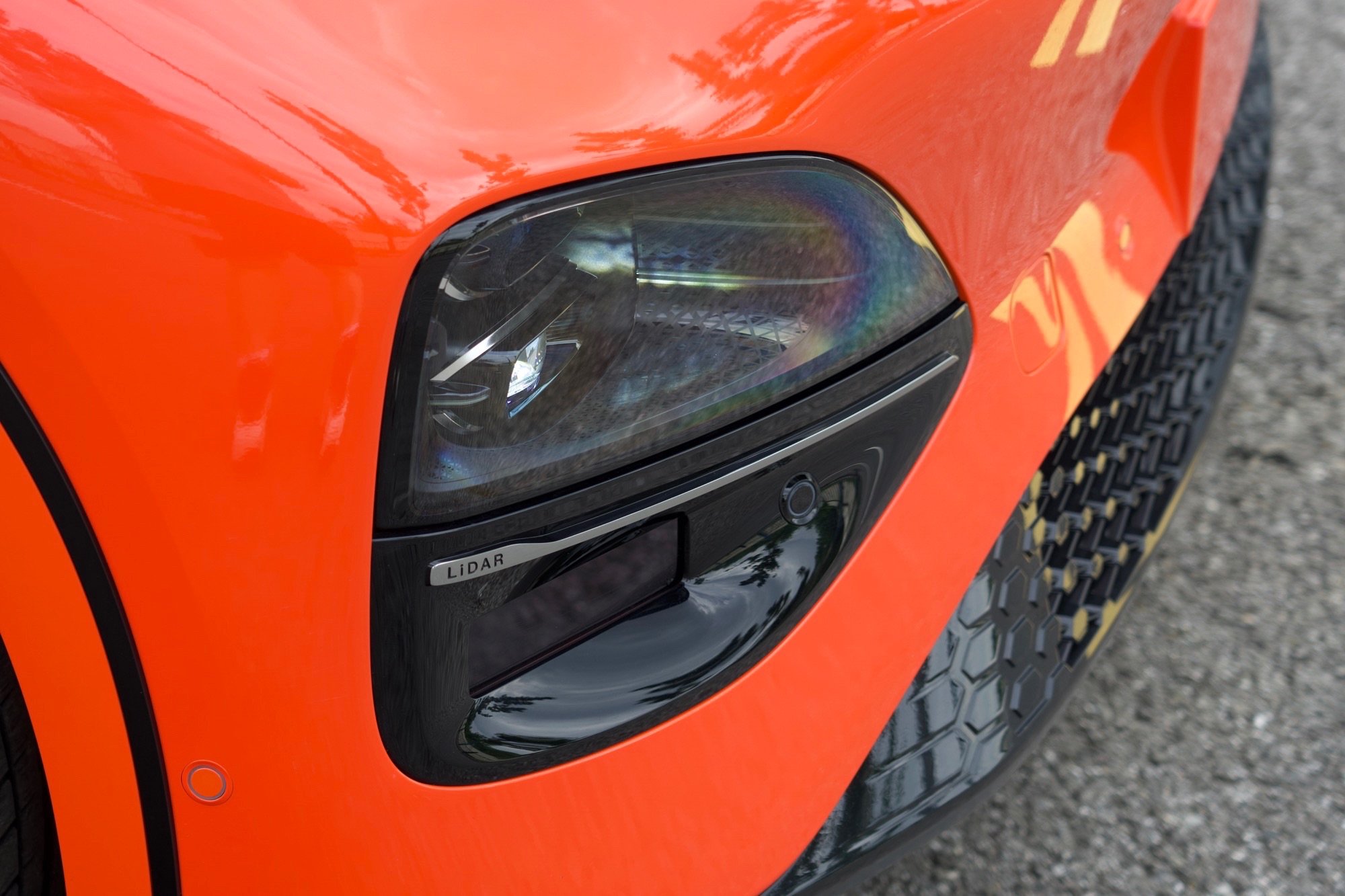
Let’s start with the high-speed scenario. Once navigation is activated, NGP function of the car can drive according to the navigation route and intelligently overtake.
For most high-speed scenarios, the performance of XPeng’s NGP is impressive. However, when it comes to special circumstances like road constructions, the XPeng G6 may not be able to navigate autonomously and manual control is needed.

Thanks to high-definition mapping and precision positioning, the XPeng G6’s actions entering and exiting exits are seamlessly smooth. However, when it encounters a ramp within an exit, the G6’s braking is not as linear as one would hope, exhibiting a somewhat noticeable disparity.In urban scenes, the XPeng G6 performs quite well. Regardless of day or night, the XPeng G6 is very accurate in recognizing traffic participants.
However, we also found that under some sections of NGP, the vehicle tends to sway slightly to the left/right within the lane, and in some cases, it follows the faded and disused lane markings. This could be due to the high-definition map not being updated in a timely manner.
At the same time, we tested the challenging scenario of making a U-turn, and XPeng G6 passed smoothly, avoiding the traffic police in the middle of the road.

The strategy of XPeng G6 for U-turns is to make a wide turn, restricting vehicles behind wishing to make a short turn, left. The strategy itself is not a problem, but I felt somewhat tense inside the car. Upon completion of the U-turn, XPeng G6 successfully located the lane markings on the opposite side and continued its NGP journey.
XPeng G6 can execute the U-turn action, but its overall performance is average, characterized by instability of the steering wheel and slow U-turn speed. Of course, U-turn differs from turning, and it is a scenario that challenges all who develop urban navigational assistance-driving vehicles.
In the underground parking lot, XPeng G6 can initiate memory parking, supporting cross-story memory. After one-time learning, XPeng G6 can memorize your parking route.
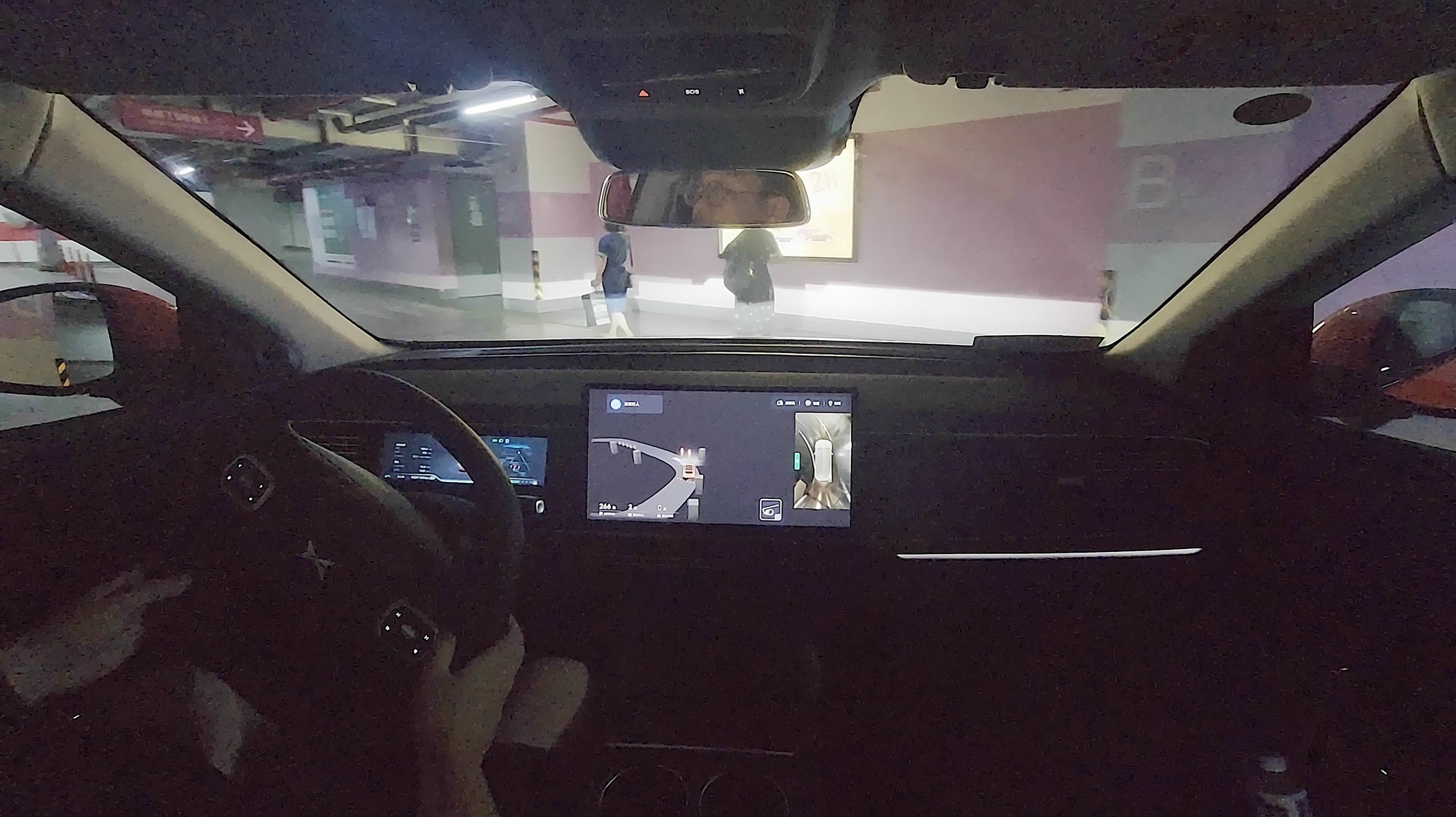
In our tests, XPeng G6 controlled the speed very uniformly on the downhill ramps, and even slowed down at the bottom of the ramp. Also, while passing through speed bumps, intersections, or when encountering pedestrians, its response and handling ability were equally smooth.
To sum up XPeng G6’s assisted driving capability, it aligns closely with the G9 in terms of hardware and capability. It boasts impressive urban and highway assisted-driving performance. In the price range of 200,000-300,000 yuan, the assisted driving capability of XPeng G6 certainly belongs to the top tier.
Final Thoughts
As a vehicle that aligns closely with the Tesla Model Y in size, power, space, and even interior style, XPeng G6 undoubtedly has garnered significant attention. At the expressway service area, charging station, or even on city expressways, the stir caused by XPeng G6 is quite high, with people approaching to ask about the differences between G6 and Model Y.
The XPeng P7 has greatly boosted the brand and sales, and seems to be XPeng’s Model 3. Today, G6 could likely become XPeng’s Model Y, with sales possibly increasing even further.
If you happen to be fond of new technologies, such as faster charging, powerful assisted driving, and a decent smart cabin, XPeng G6 can be a good choice in the 200,000-300,000 yuan range. Apart from…Cutting-edge technology, practical space, and excellent driving experience. Regardless of purchasing, XPeng G6 is definitely worth a try.
This article is a translation by ChatGPT of a Chinese report from 42HOW. If you have any questions about it, please email bd@42how.com.
